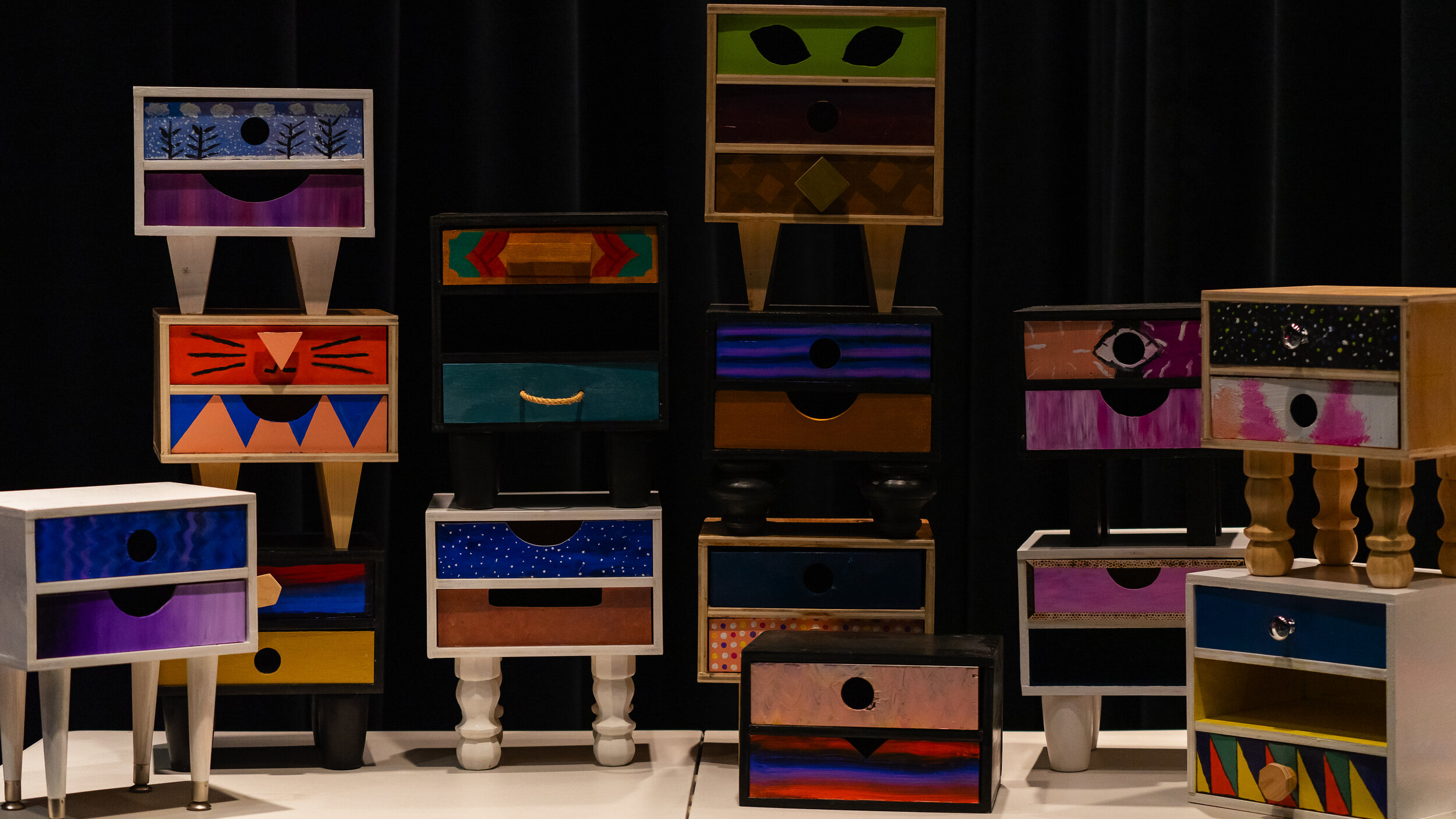
Design Apprenticeship Program (DAP)
The Design Apprenticeship Program I & II (DAP) is a design-based mentorship and skills-building initiative that encourages teens and young adults to invest in the improvement of the physical and social conditions of their community.
DAP Summer 2020 Coursework Assignments
Perspective Drawing (DAP I)
To demonstrate the importance of depth perception and space in illustrated design, apprentices were assigned a YouTube video to watch on perspective drawing. The video walks viewers through how to make a perspective drawing of a room that has a table using a vanishing point, horizon line and shadows. Each teen was tasked to reproduce the drawing demonstrated in the video, and some went further and used the technique to illustrate different rooms.
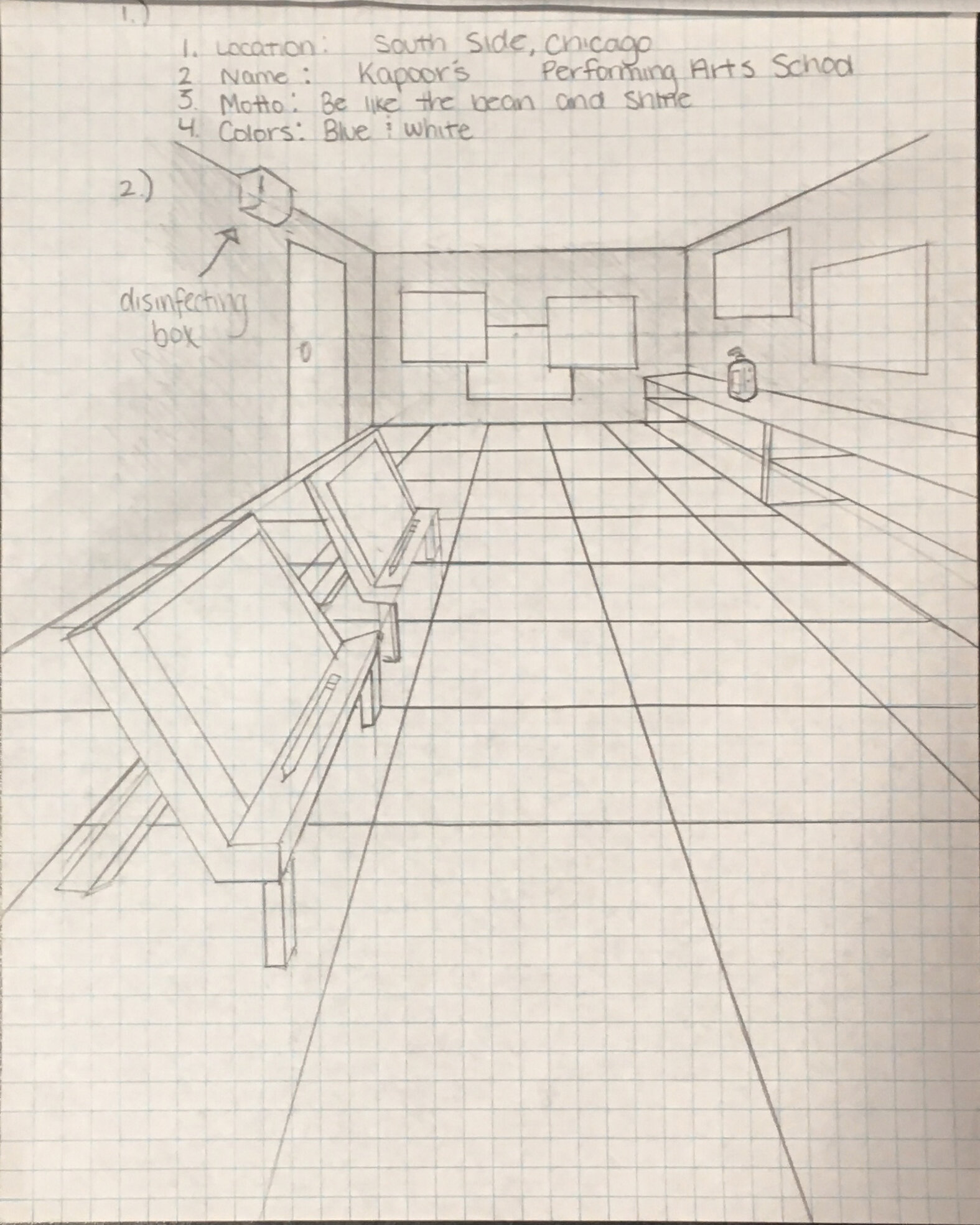
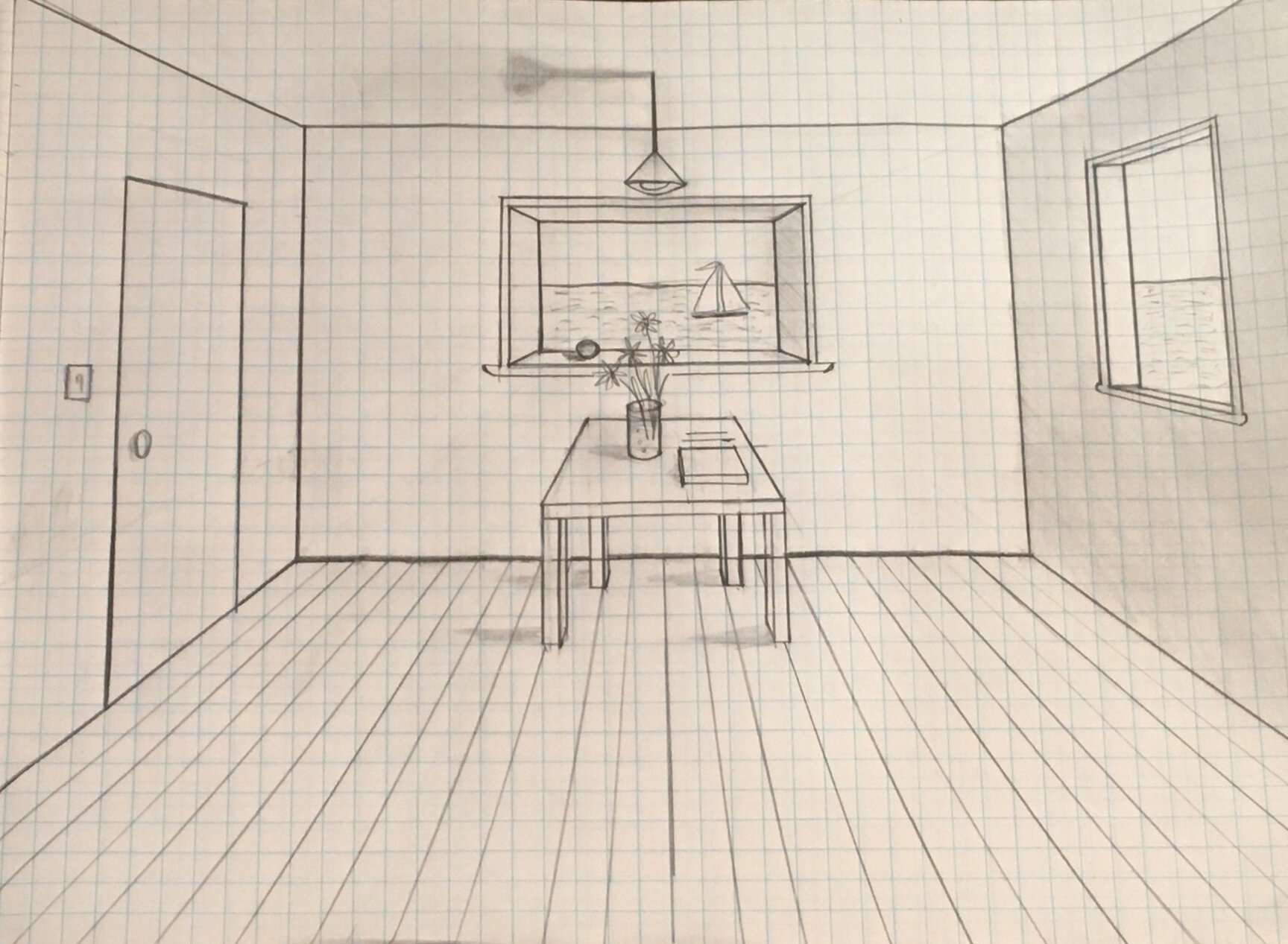
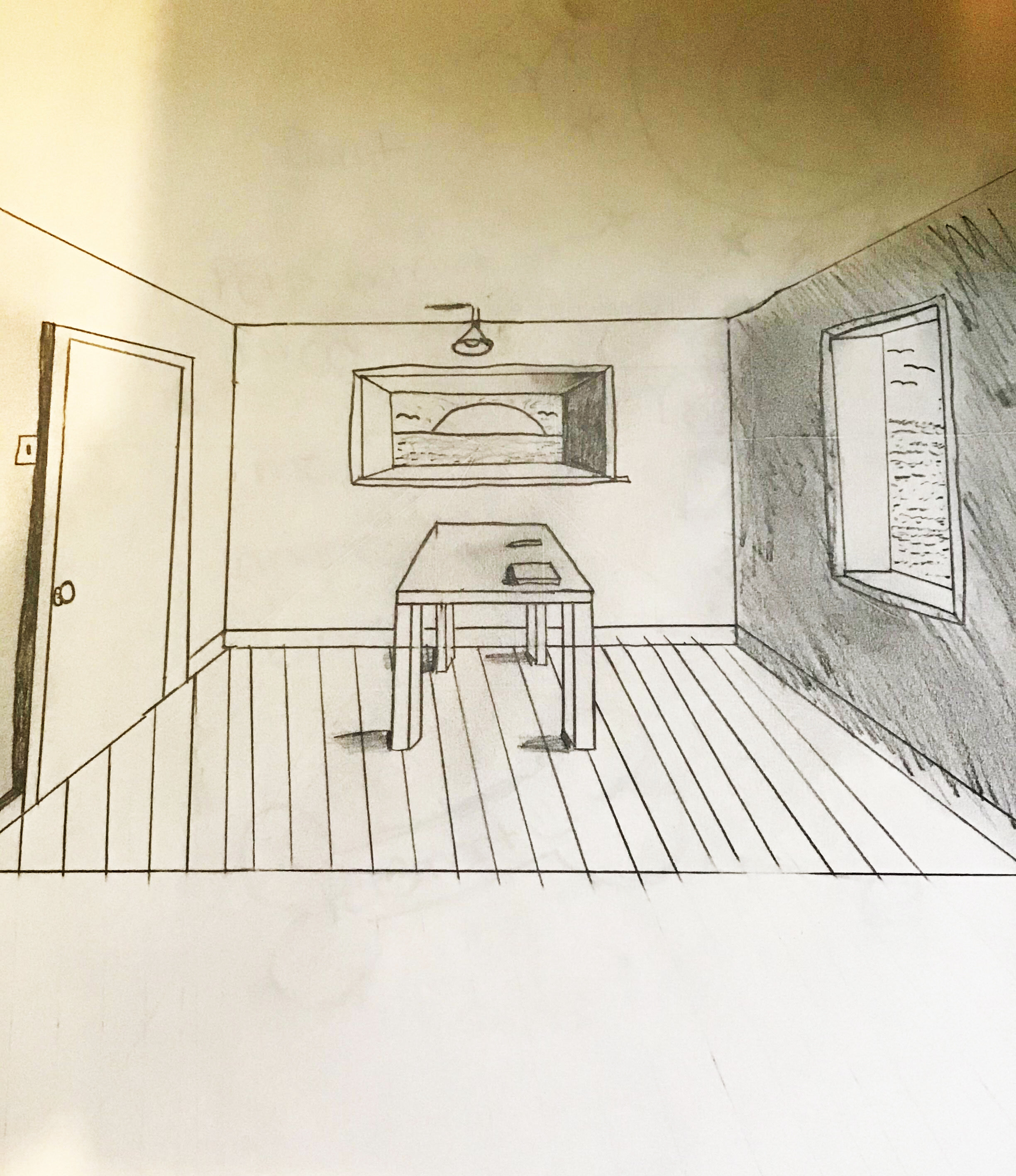
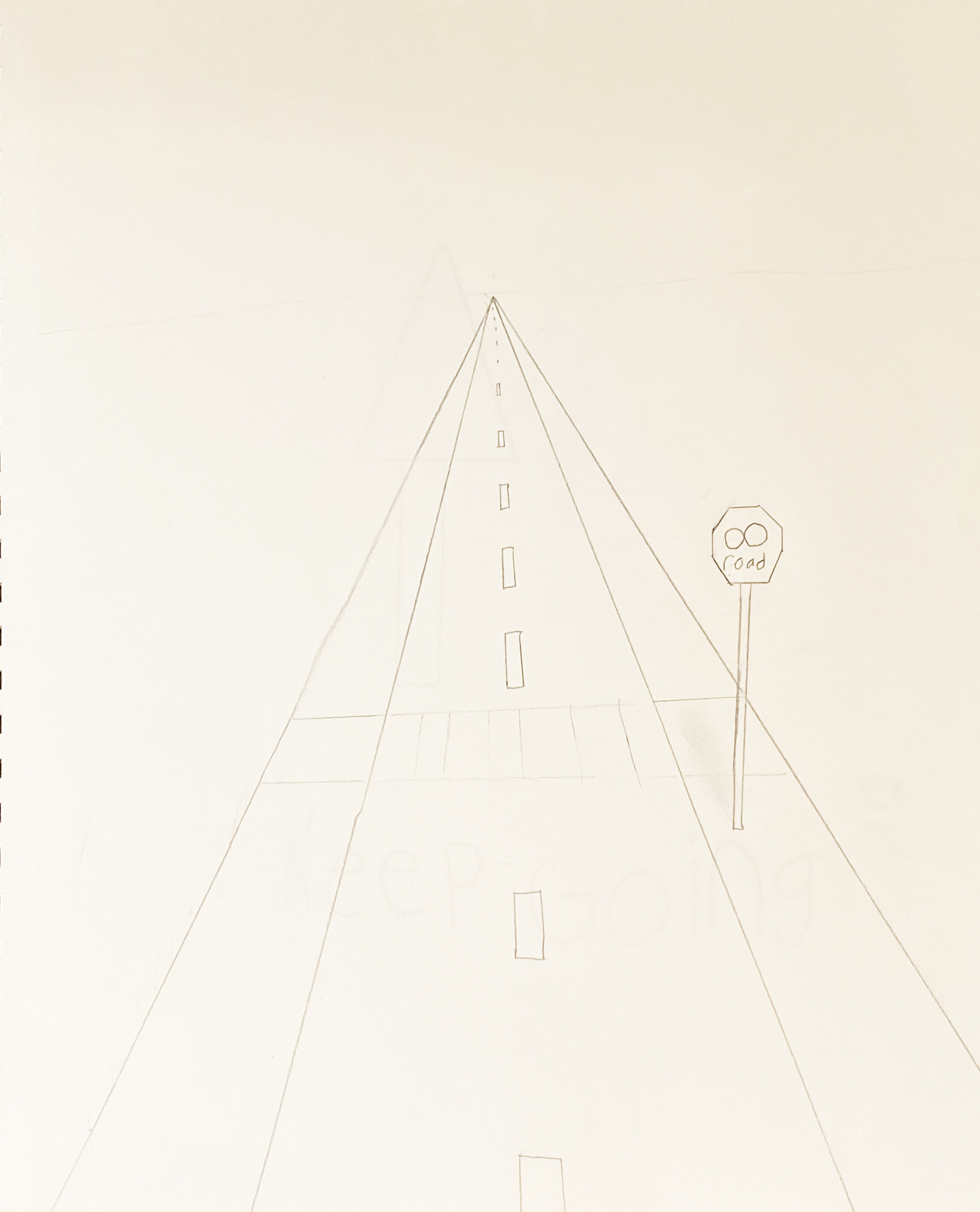

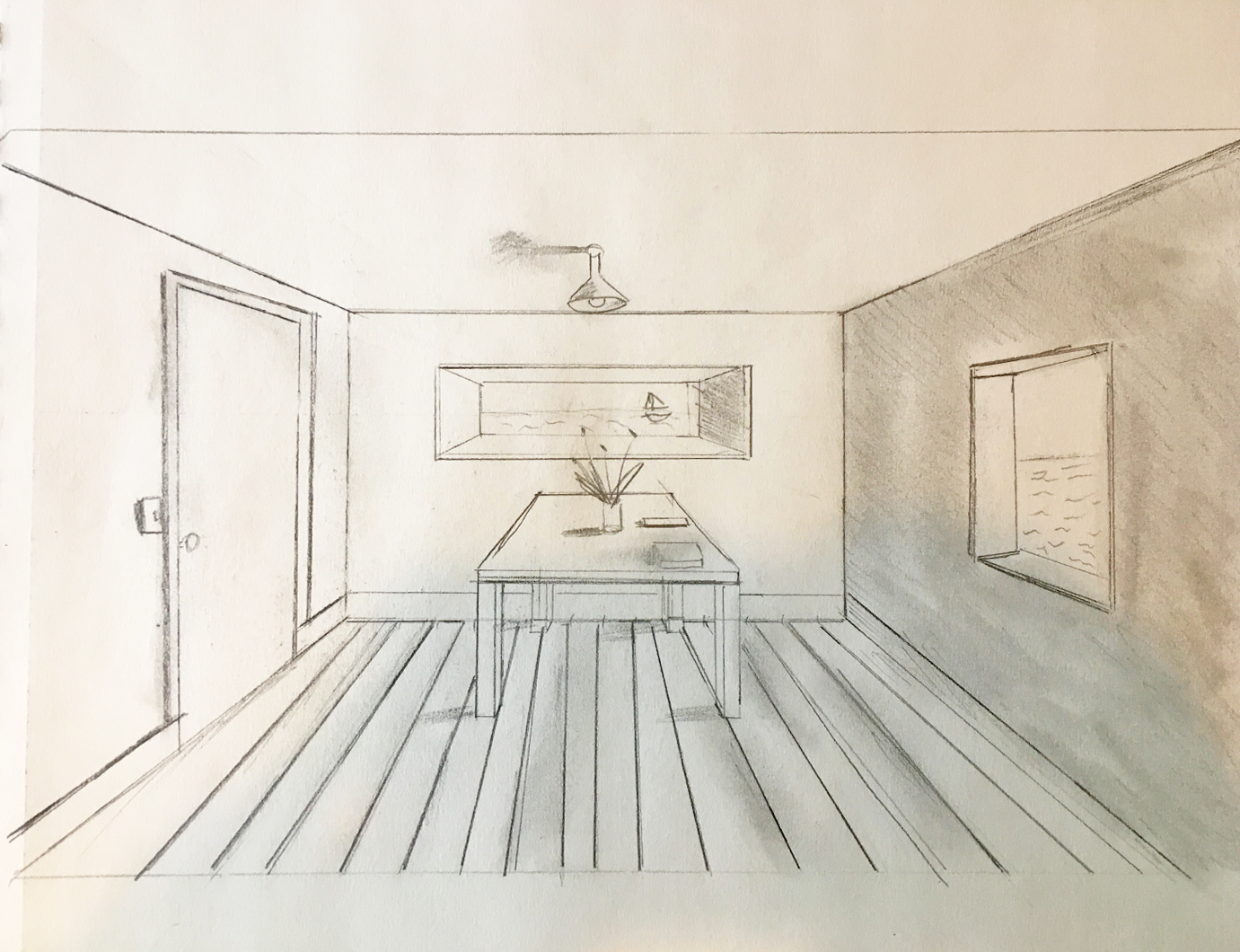
Face Mask Design (DAP I)
Apprentices independently designed face mask prototypes using digital software and produced physical versions from their digital files. The content of their designs were based on each teen’s own interests and creative choices. Apprentices were provided a digital template file to work with and used the online software Pixlr to create their designs using text, color, shapes and sourced digital imagery. Before moving to production, each apprentice had a group critique for their mask prototype, and refined their designs based on feedback. The goal of the exercise was to demonstrate design as a plan and a process that can be used to creatively engage with contemporary trends.
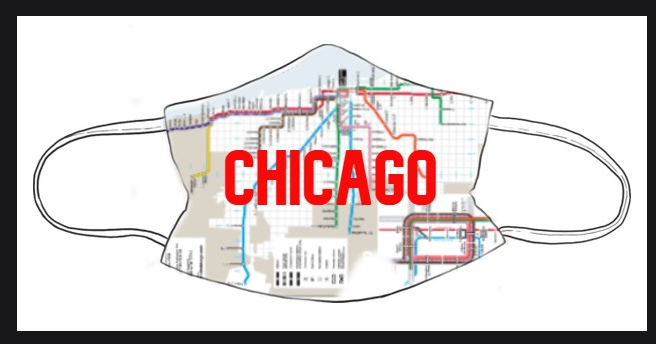

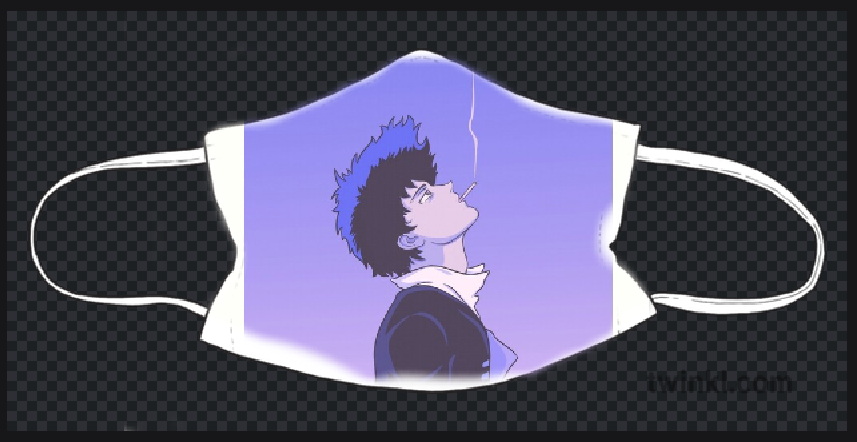
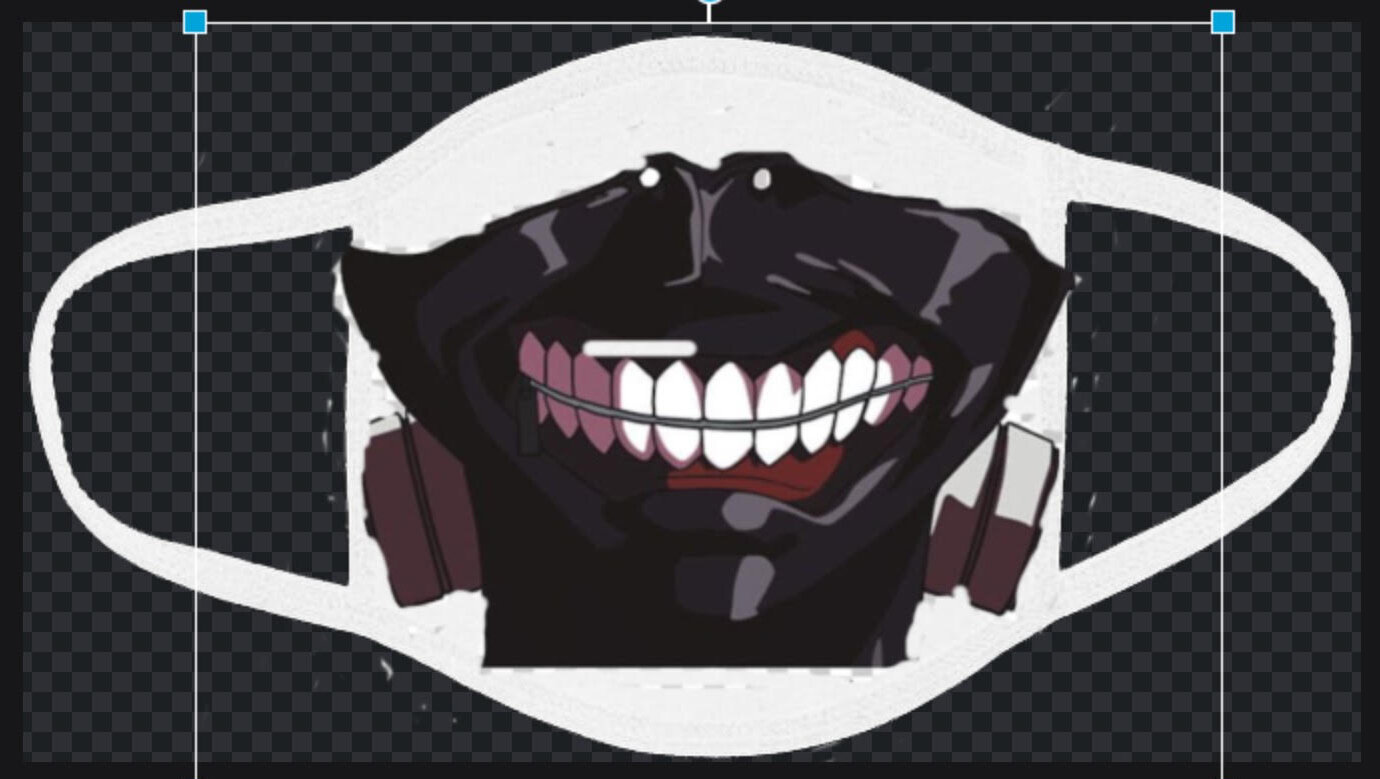


Organization & Cup Design (DAP I)
Working in teams, apprentices were assigned contemporary social issues to research and then create a new organization that responded to their issue using the design thinking process. After creating their organization by outlining its mission and vision statement, each member of the team then independently designed branding material and made a fundraising cup prototype for their organization using Pixlr. Each team presented their organization and cup designs to the larger group for critique. The goal of the exercise was to demonstrate the ability to apply the design thinking process broadly--in this case, to the design of an organization. And underscored how fundamental design is for effective communication within branding.



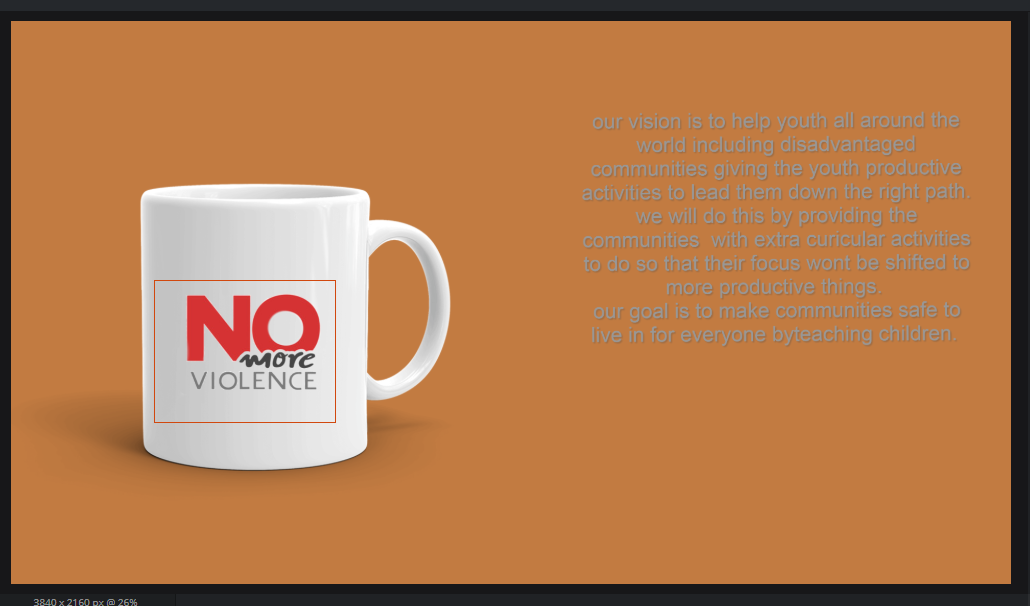
Poster Design (DAP I)
Using Google Slides, apprentices were tasked to design graphic posters that promote specific positive actions. Brainstorming in teams, teens were given narratives to respond to with a poster, with the narratives ranging from topics on global warming, education, and civil justice. After brainstorming imagery and text ideas, each apprentice independently designed a poster for their narrative, and presented it to the group for critique. The objective for this exercise was to begin a conversation on the differences between signs and symbols, and when to use which in graphic design.

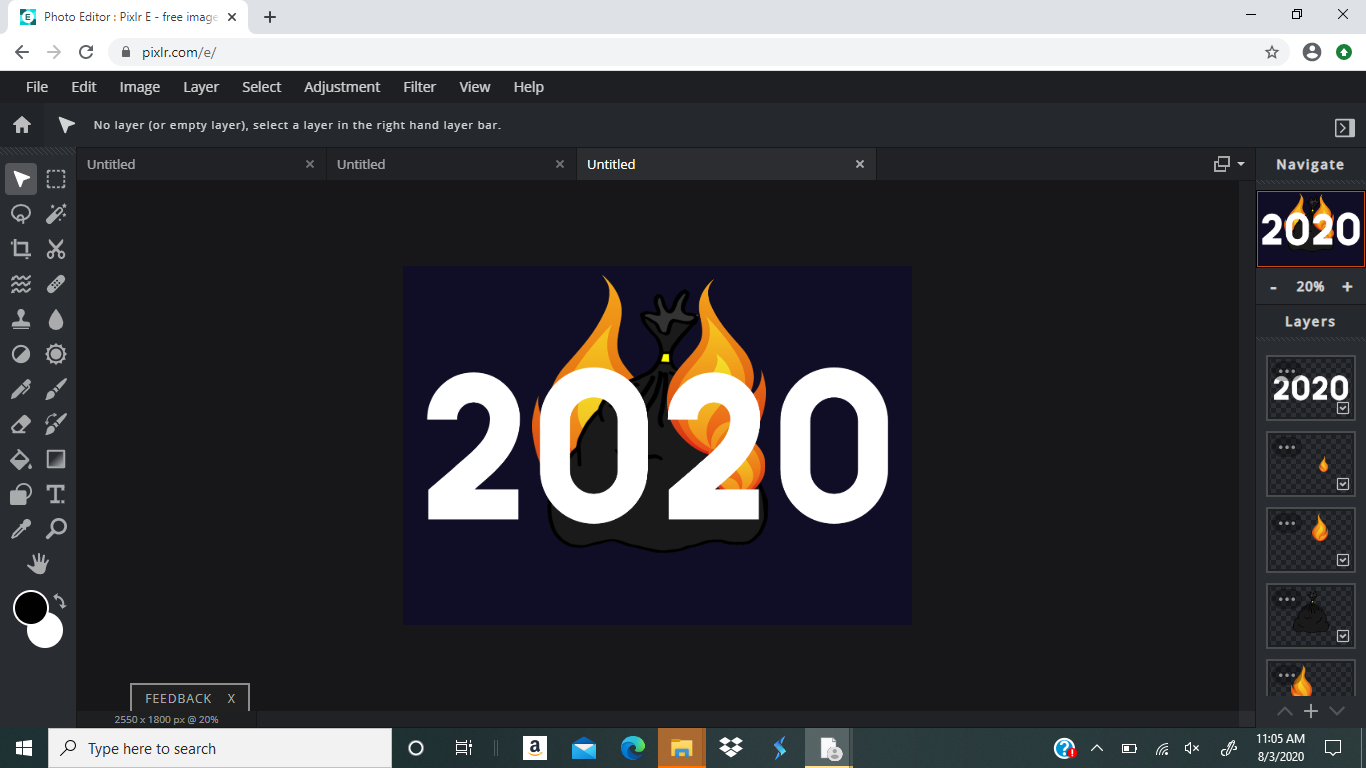


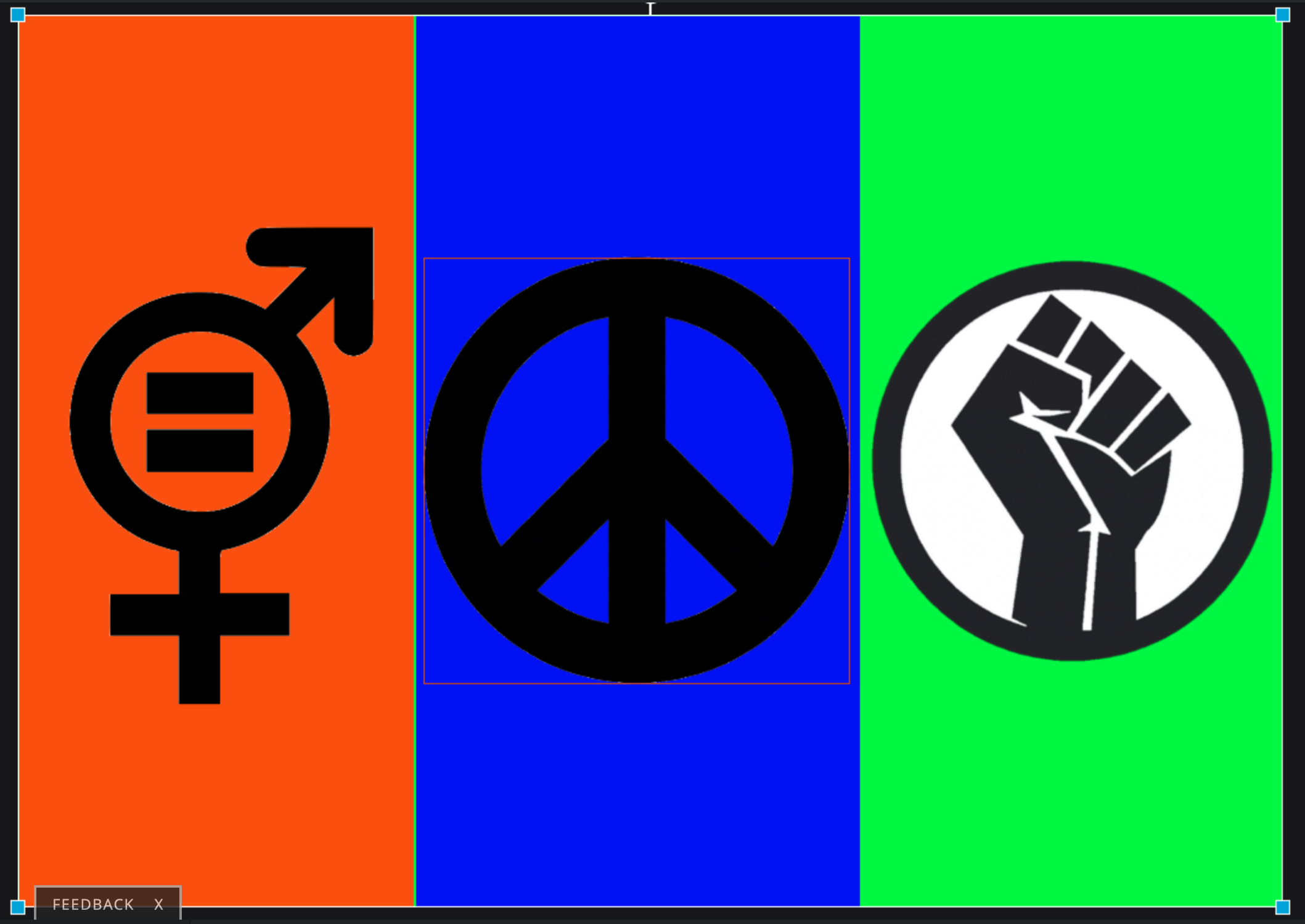

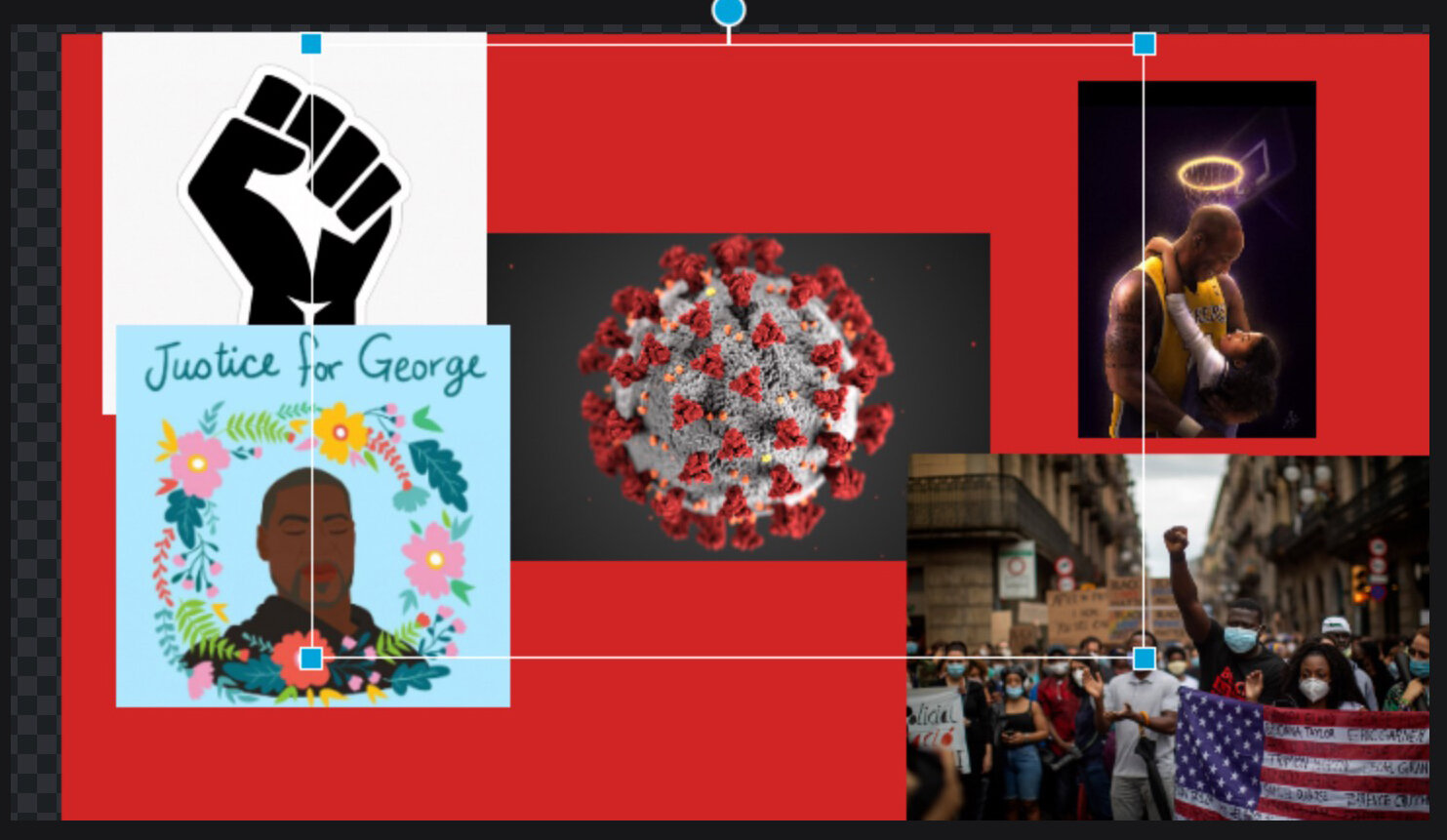




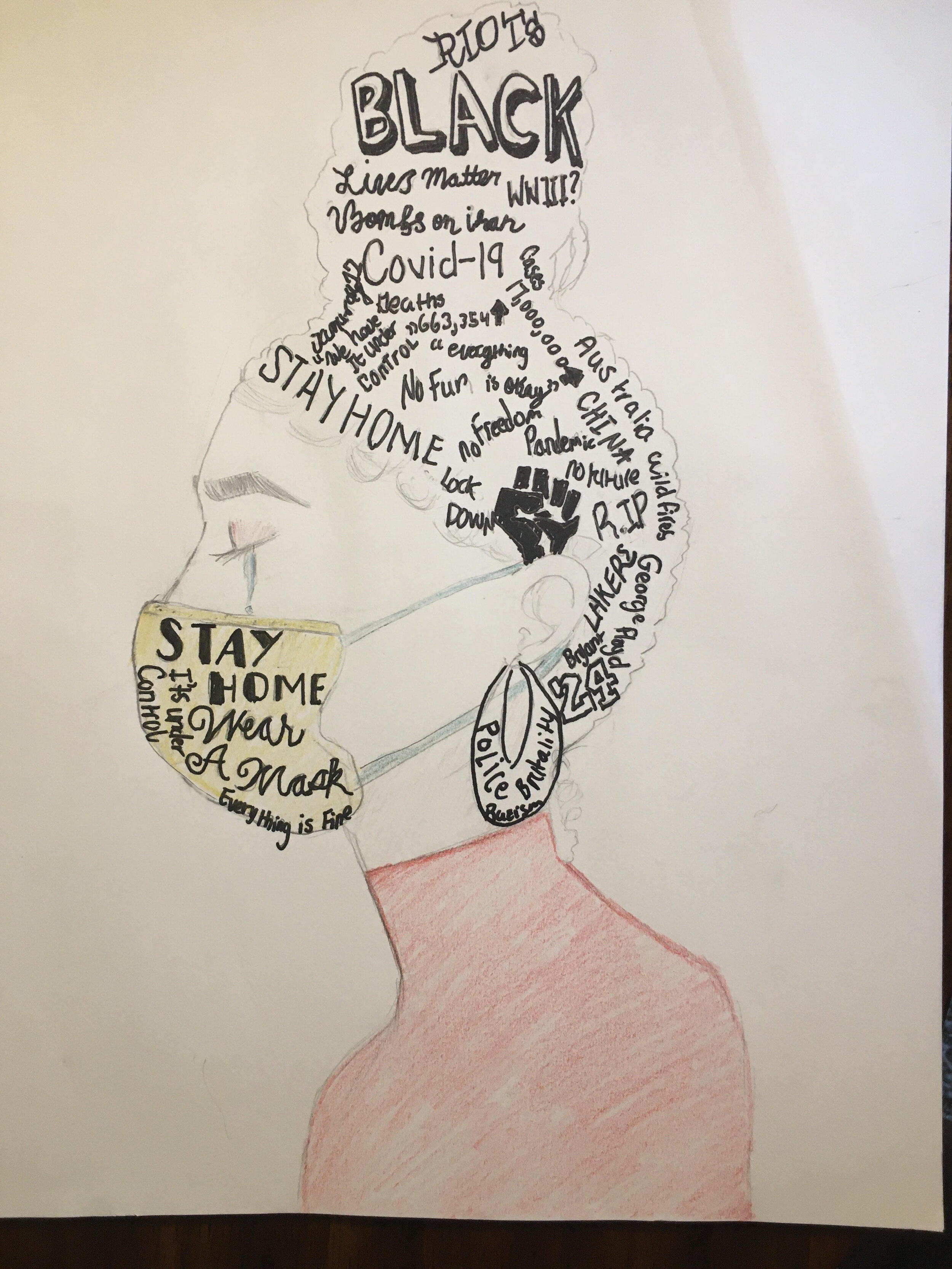


Personal Anecdotes (DAP II)
Throughout the term, DAP II participants reflected on their home experiences during COVID-19 as a method for reflecting on social connection, or lack thereof, during this time. Apprentices used these insights towards imagining new social spaces that allow for social connection, while maintaining social distance.
Guiding questions: How do you combat feelings of loneliness? Laziness? Helplessness? Frustration? Depression? How do you handle arguments? What works for you? What works for your family? What strengths have you discovered in yourself and others? What do you think are the most important strengths and skills that you need to build and maintain in order to thrive in the coming months when school begins again?


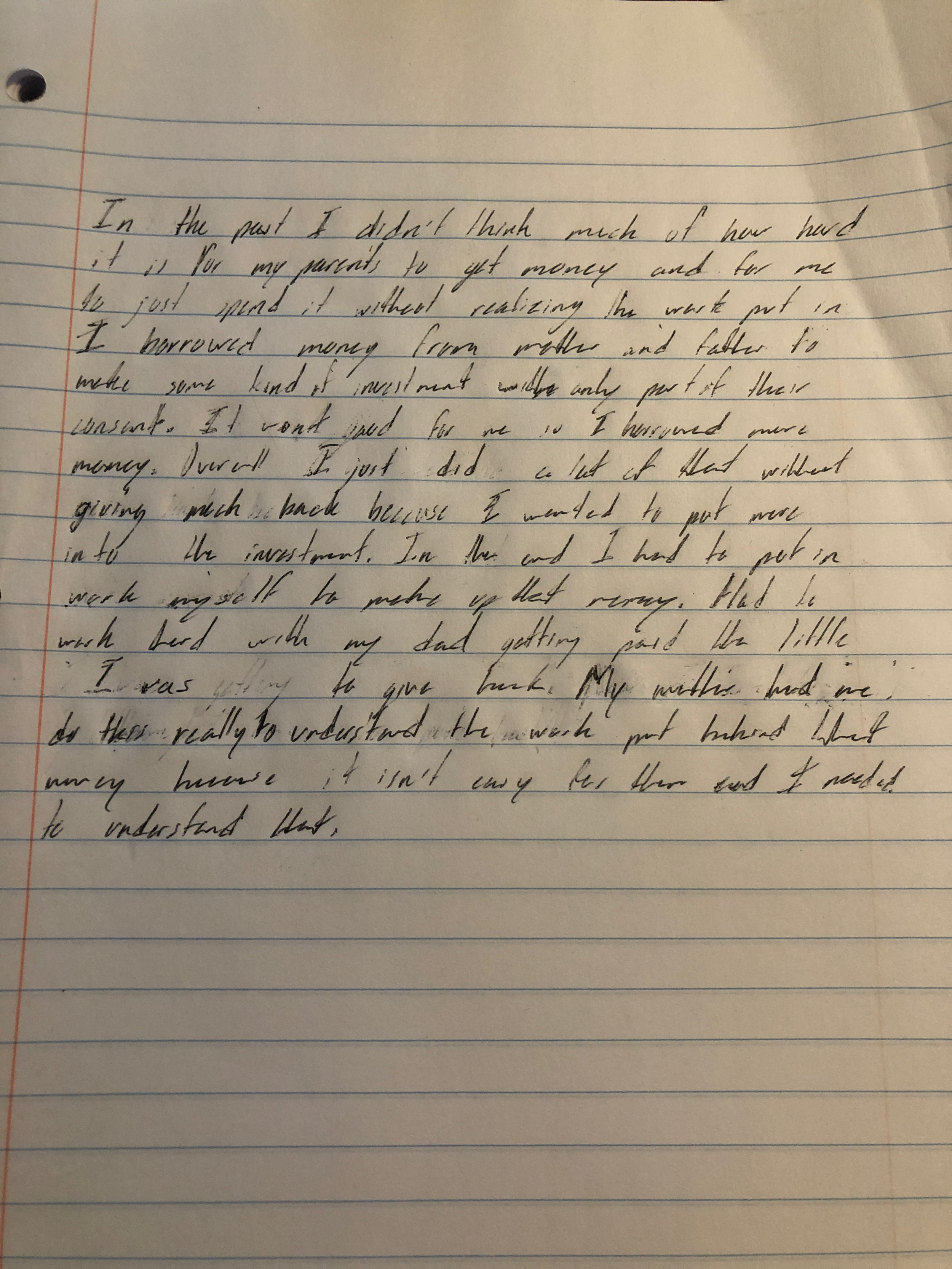
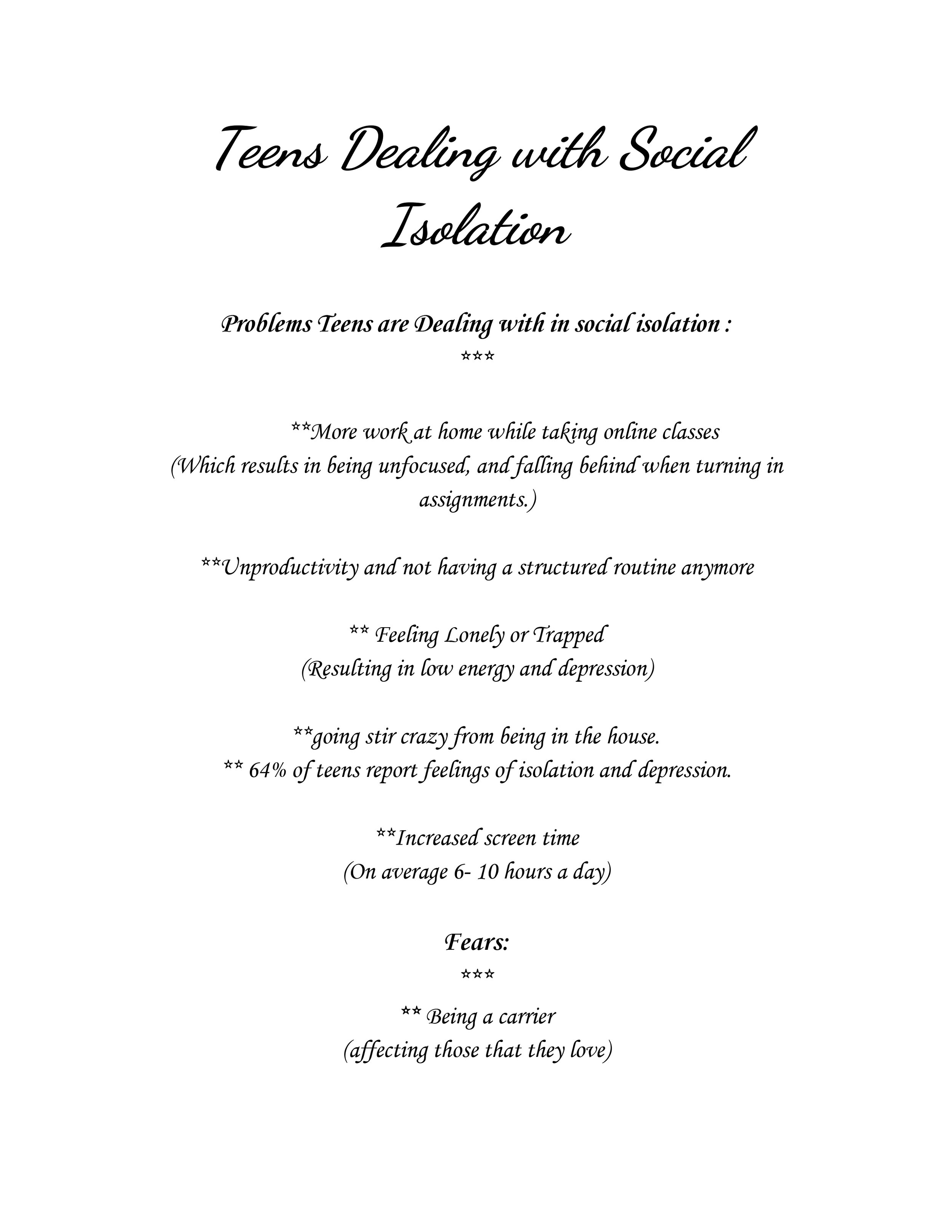
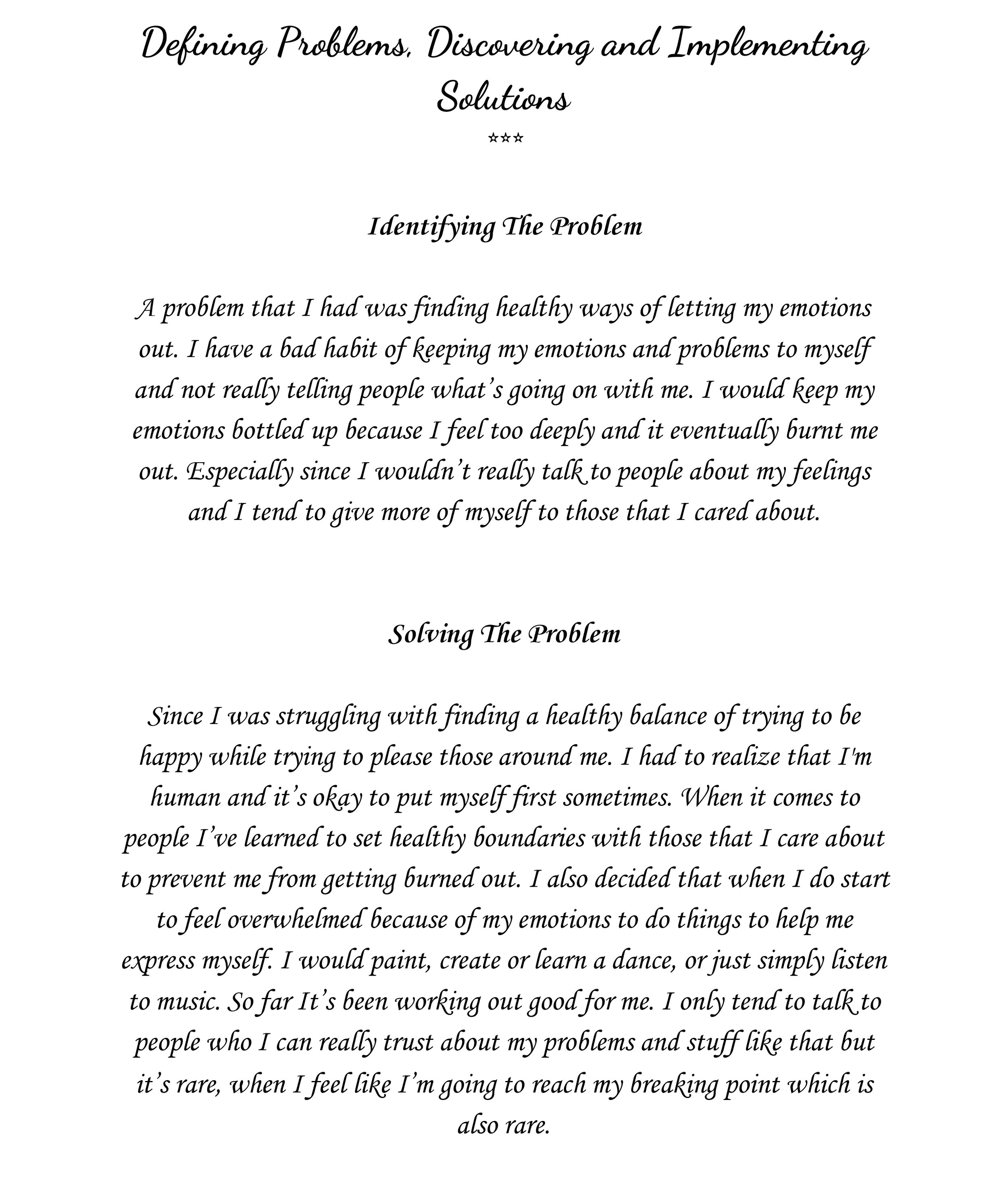


3-D Modeling (DAP II)
To compensate for time out of the workshop, apprentices spent much of their time modeling in cardboard to develop spatial reasoning skills. They explored geometry, dimension, space, and tactility using folding, cutting, and gluing techniques.
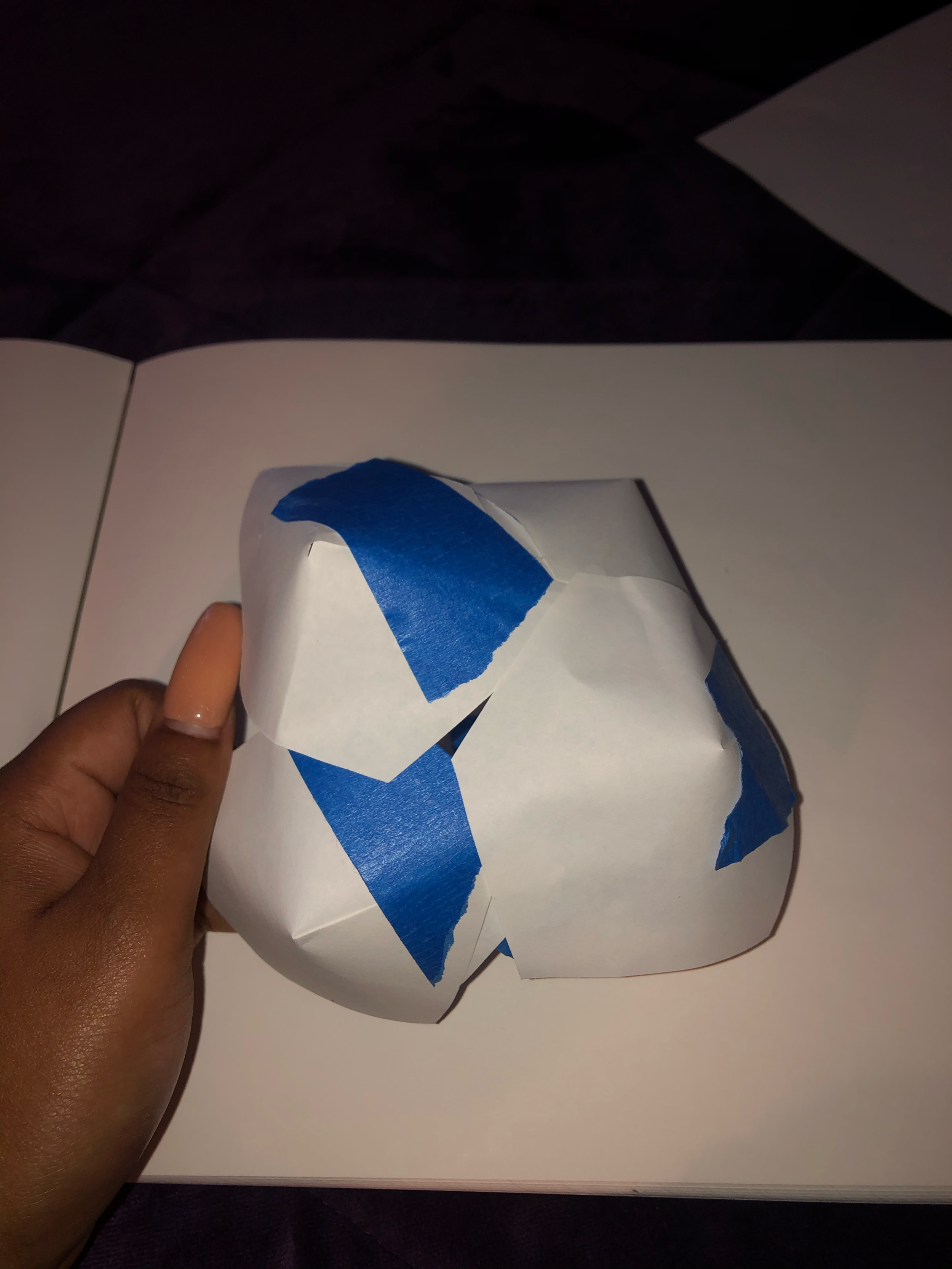


DePaul Speculative Design Fictions (DAP II)
In collaboration with Christina Harrington and Katiana Pierre at DePaul University Design Lab, our design apprentices were introduced to speculative fiction. Examining elements of utopia and dystopia and the ways in which they are present in our lived experiences, students wrote fictional narratives that paved the way for imagining speculative technologies.
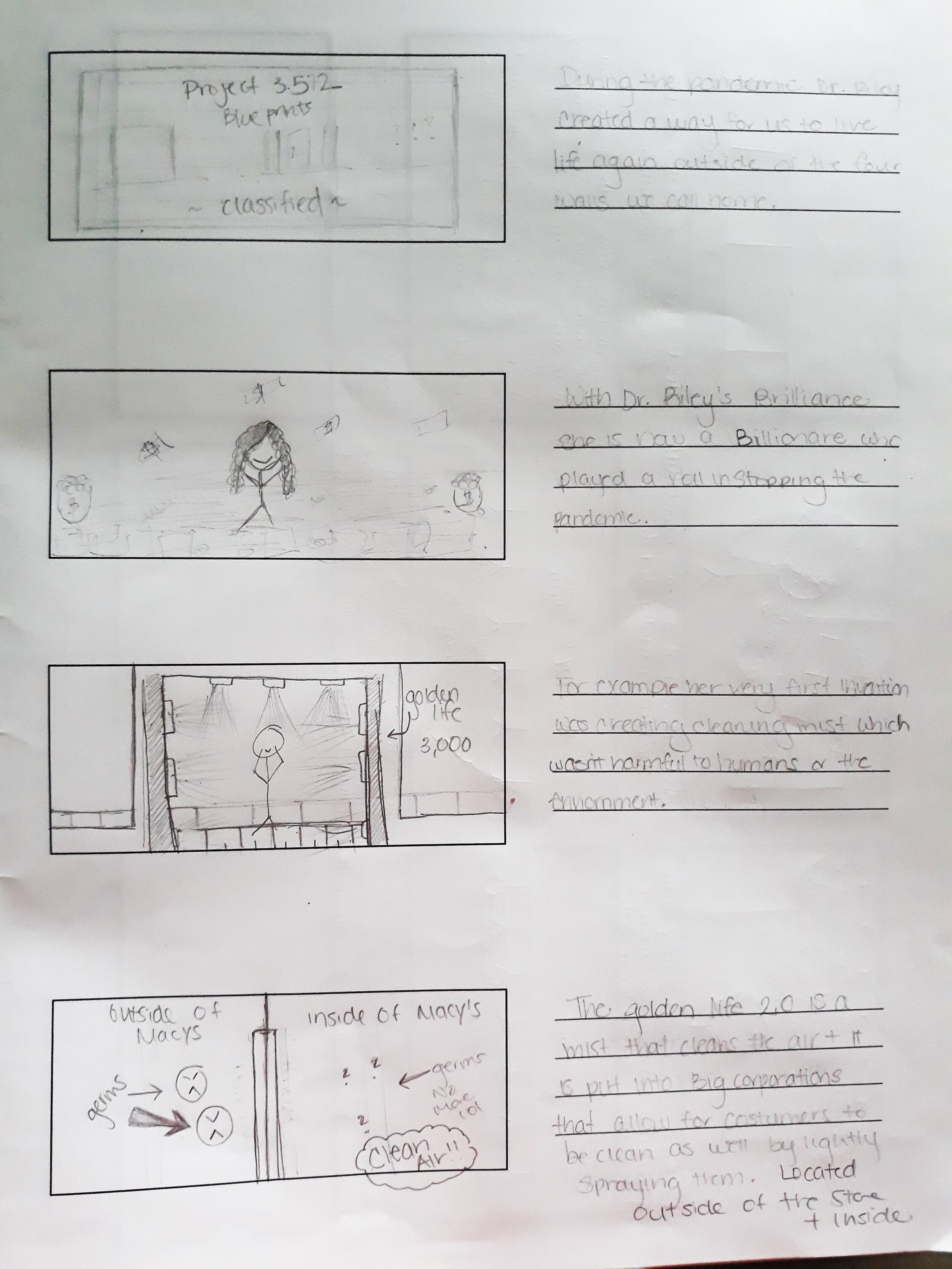
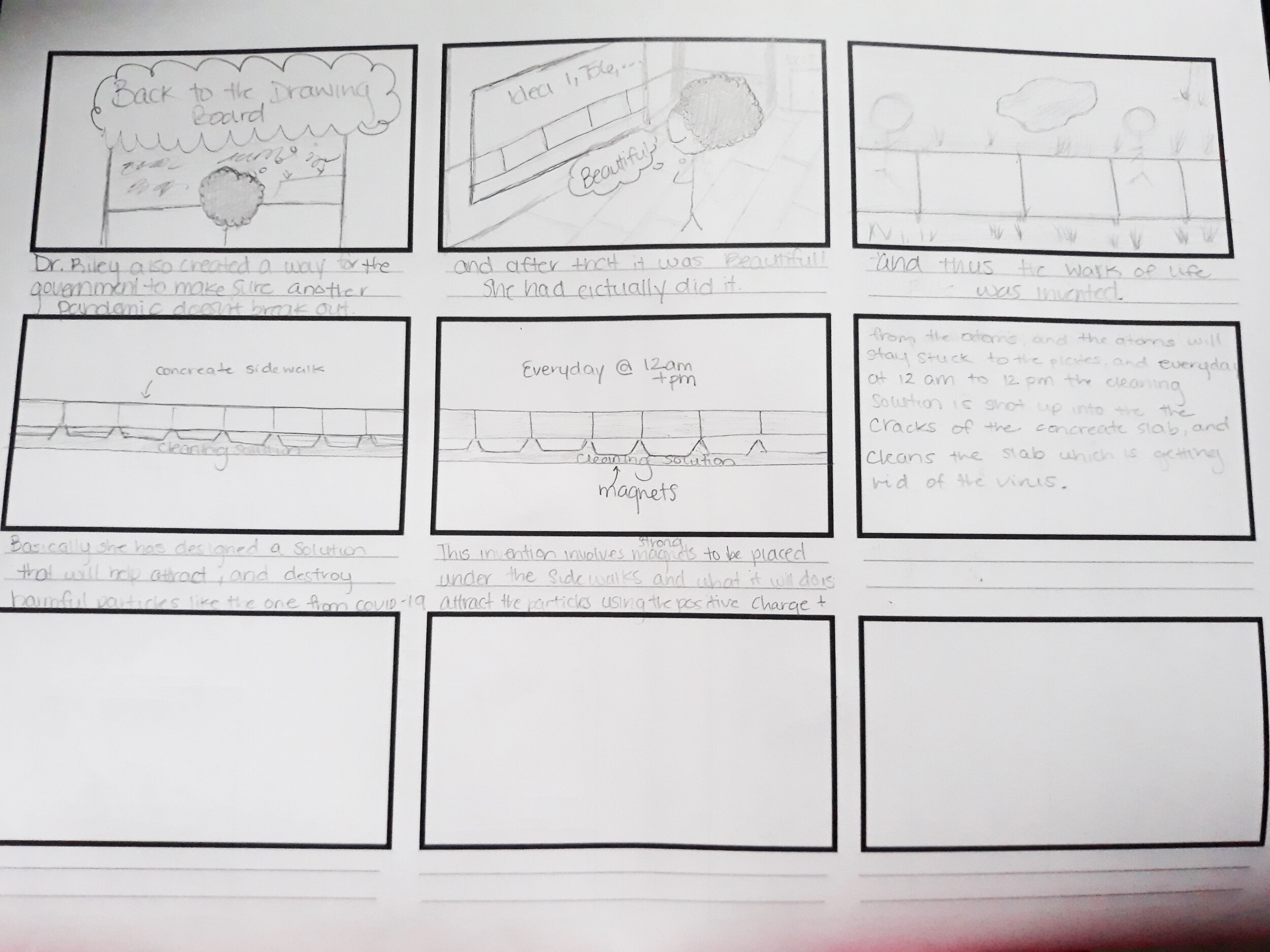
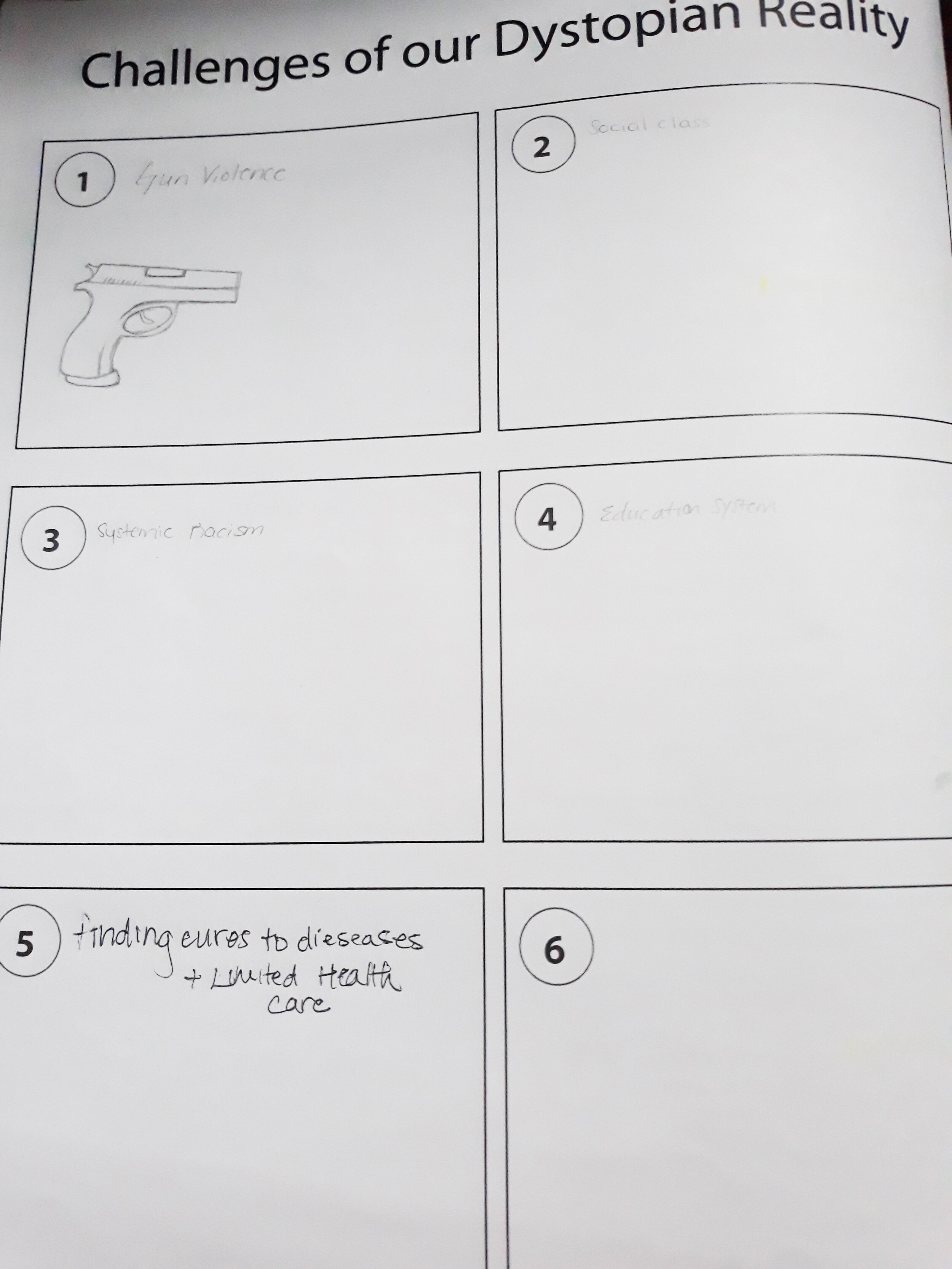
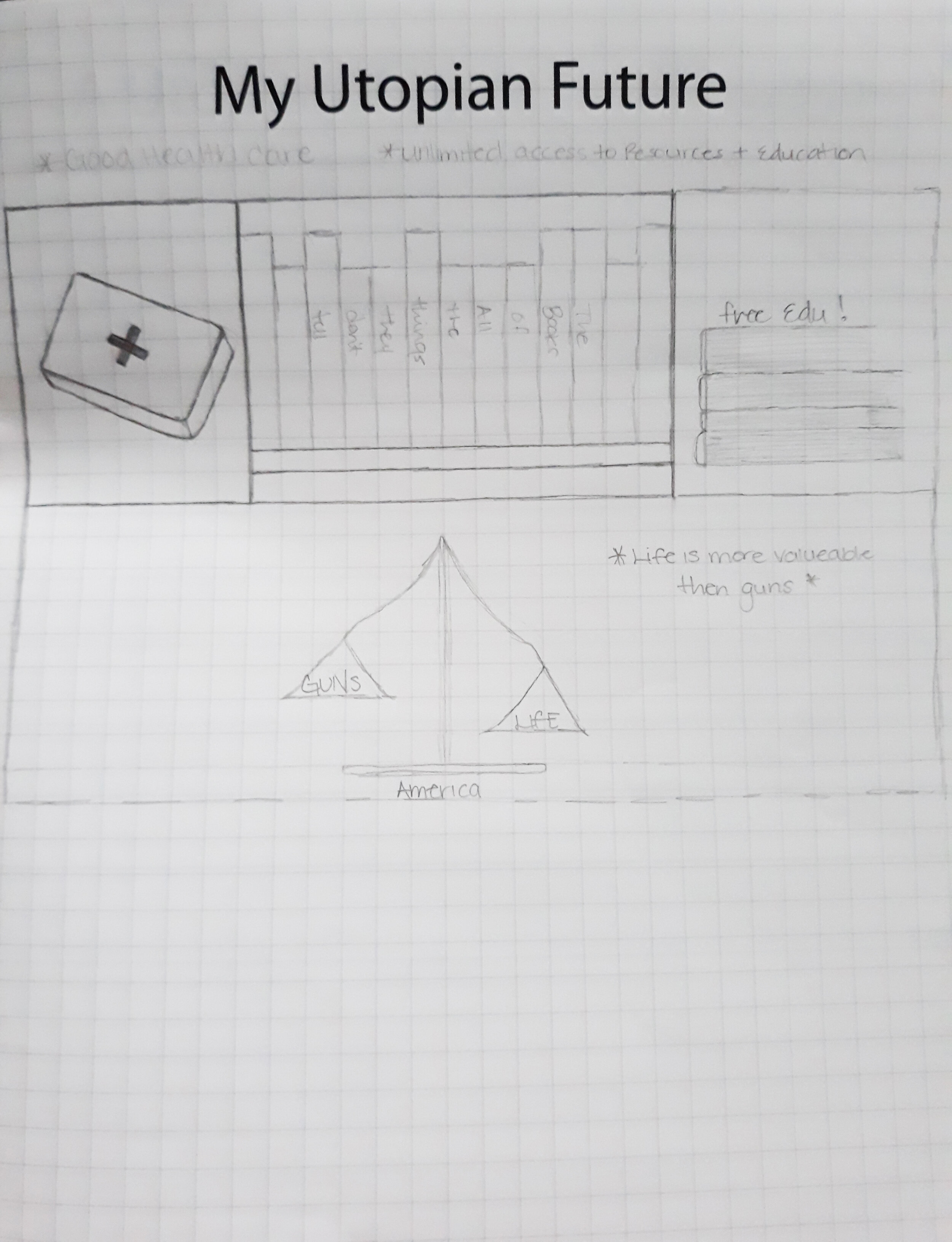
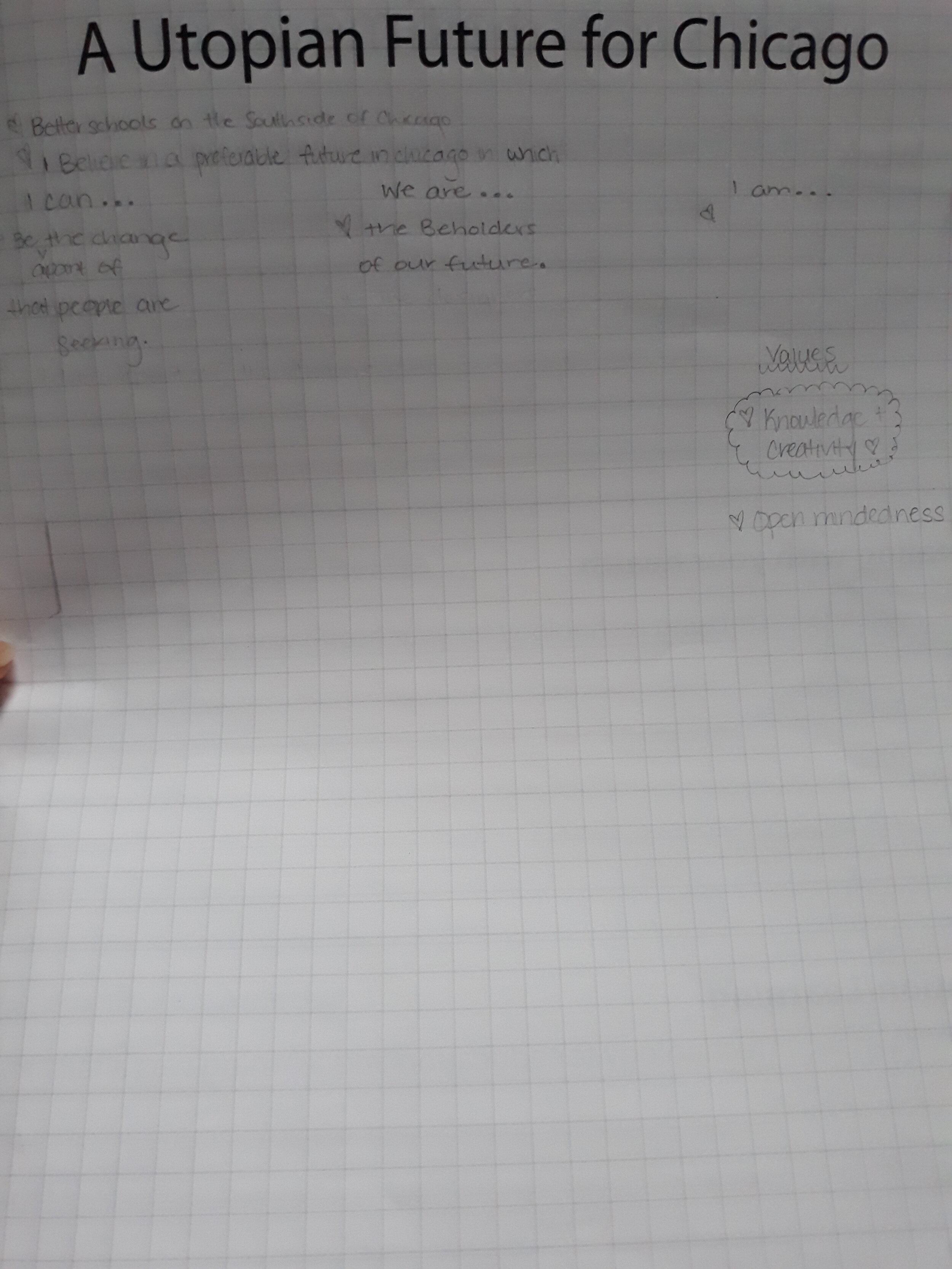
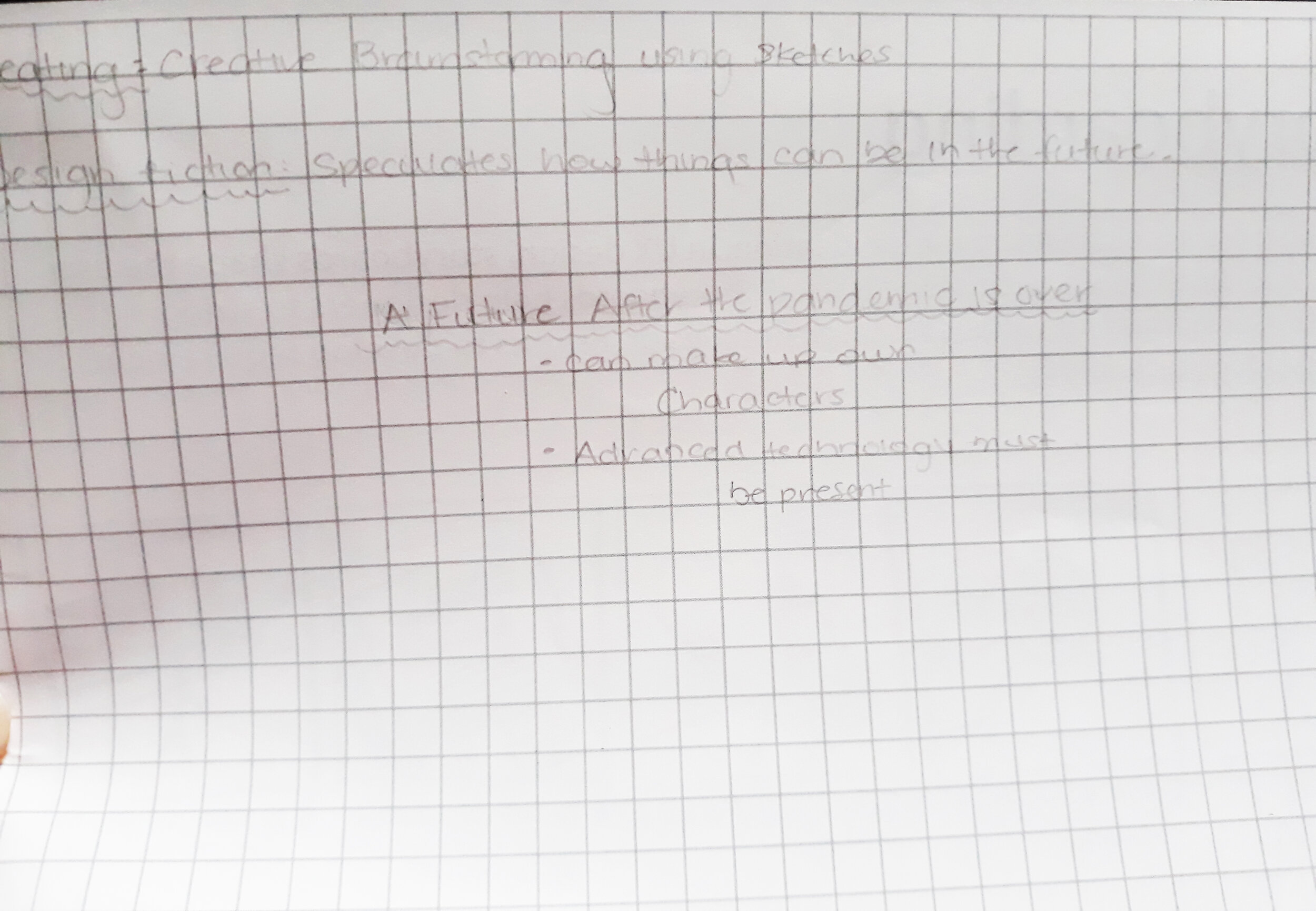
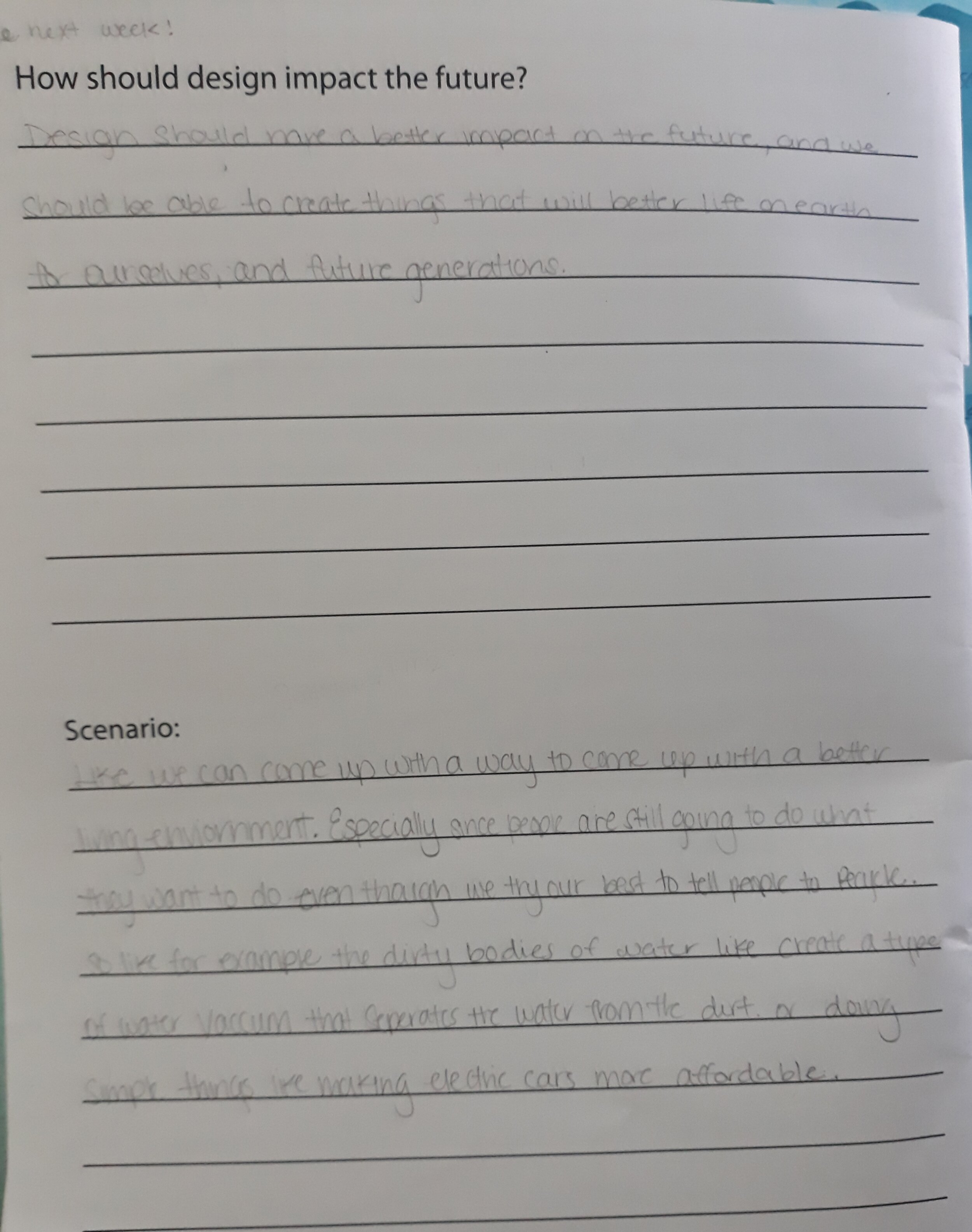
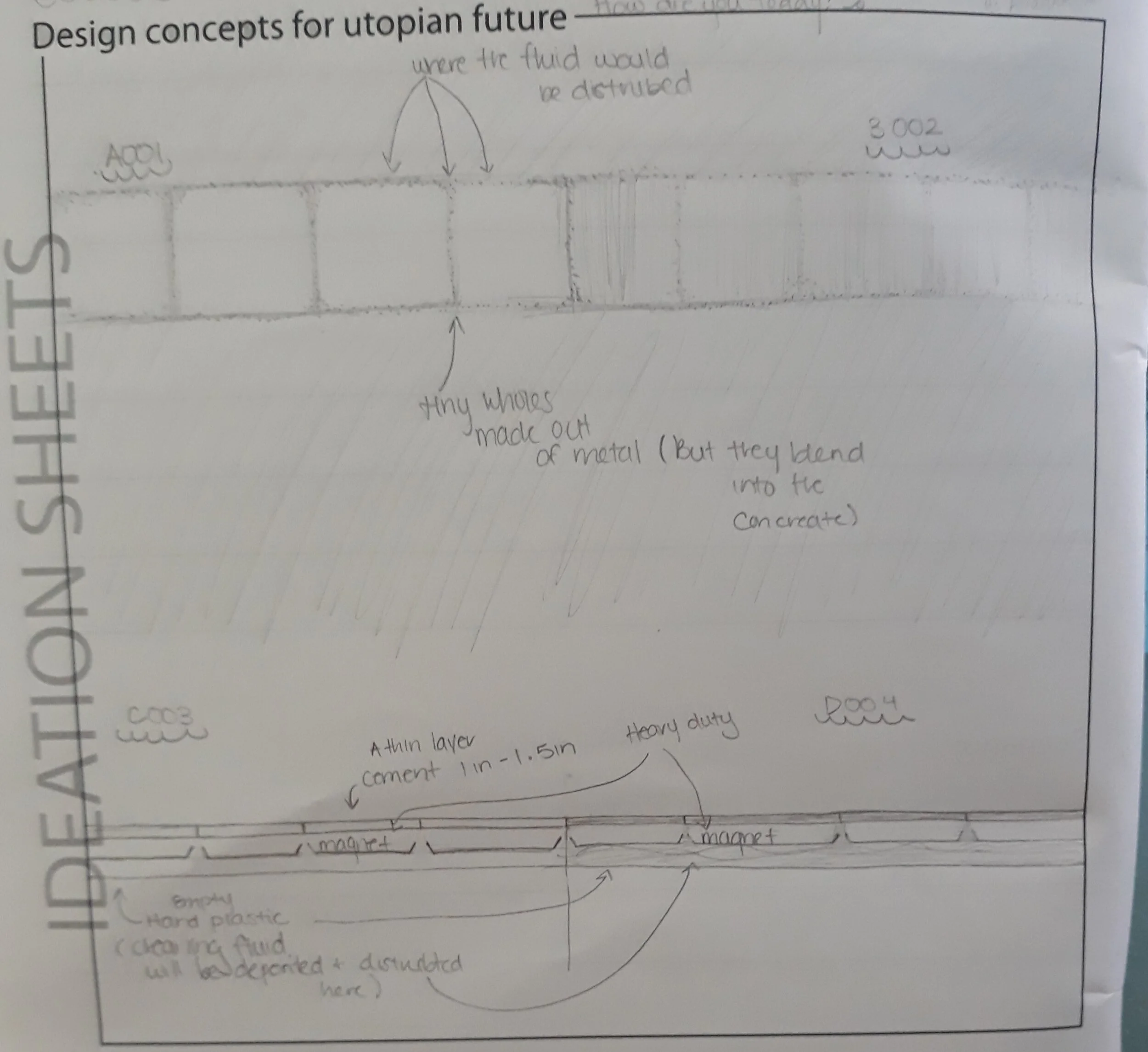







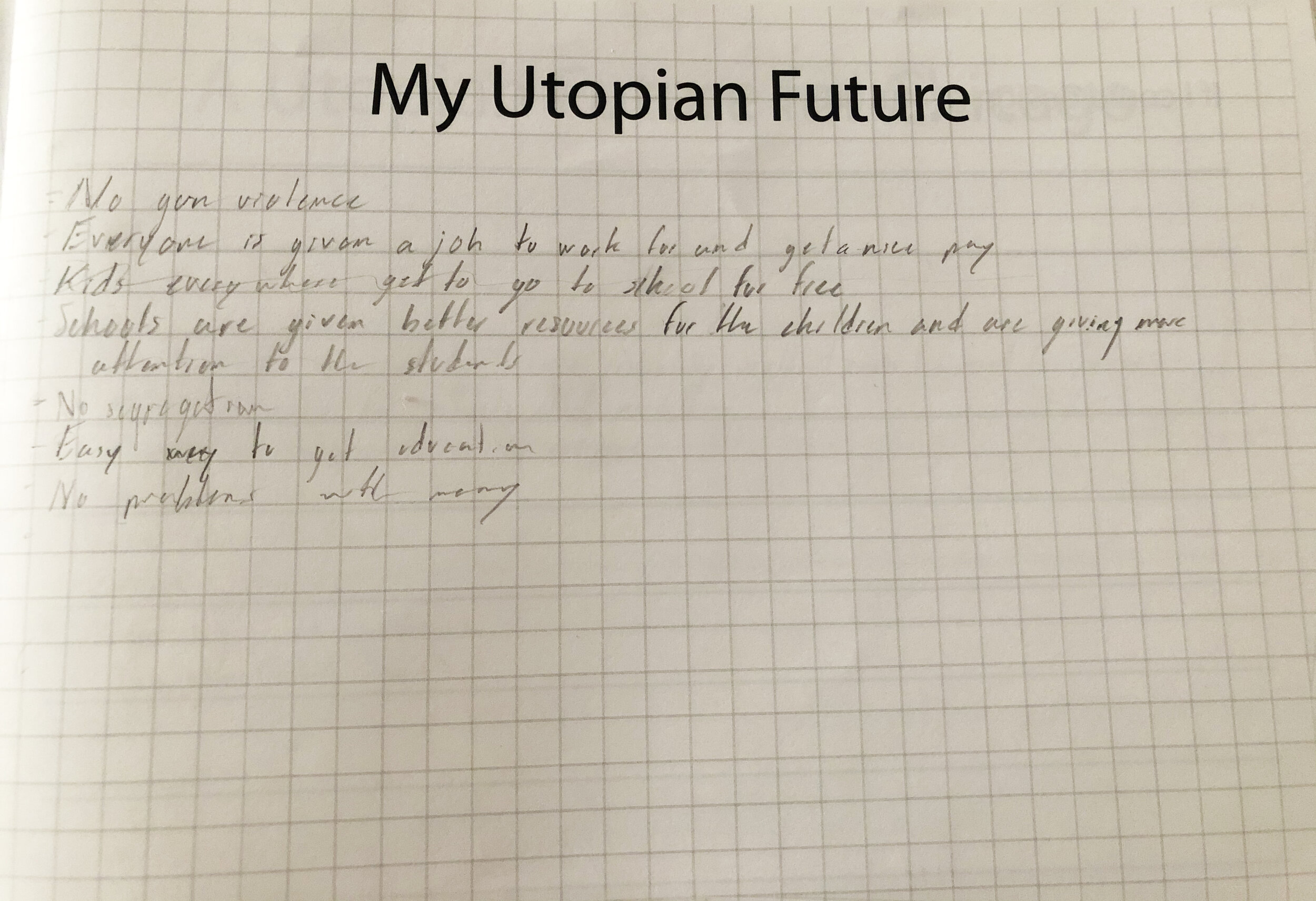
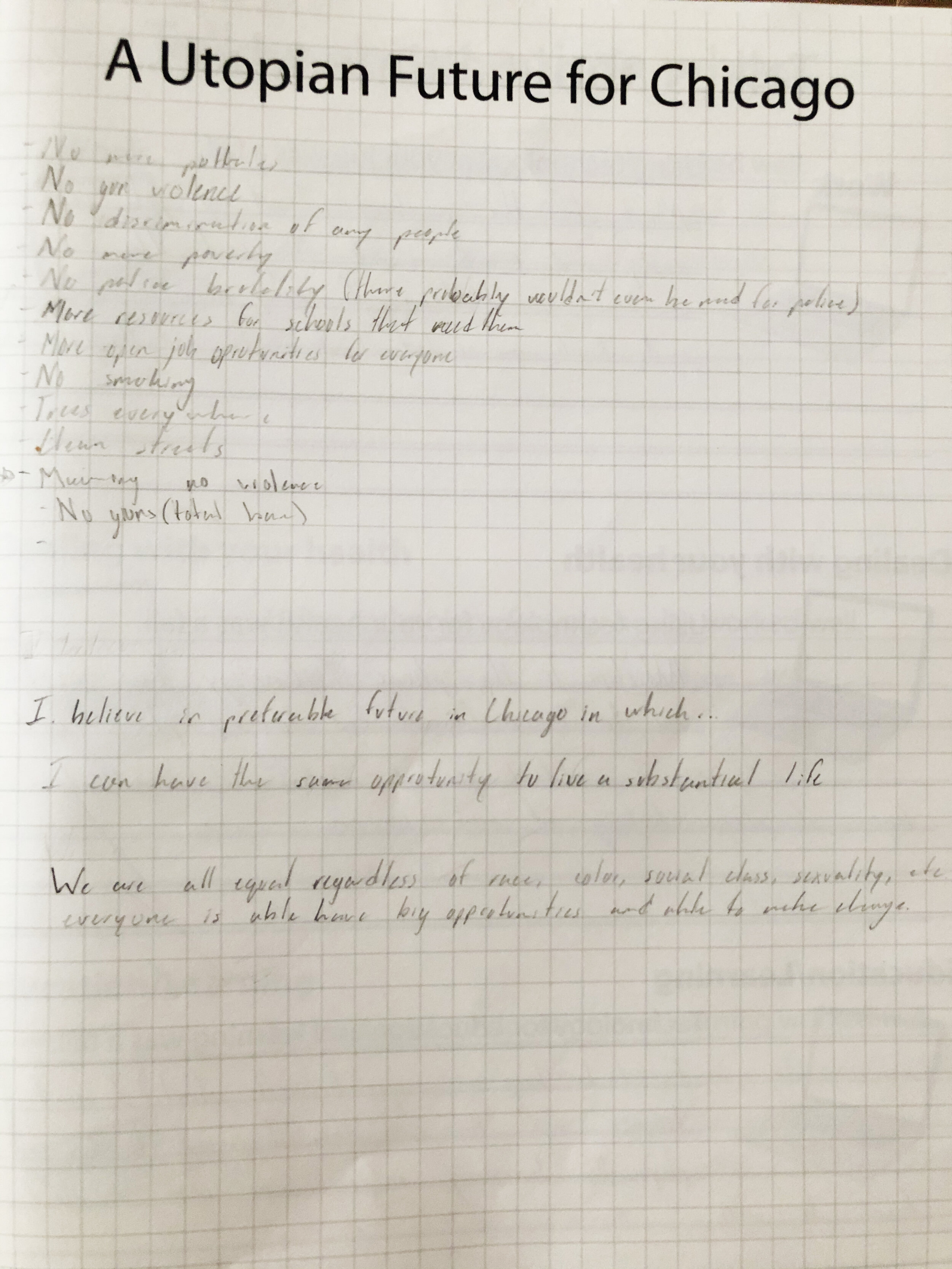
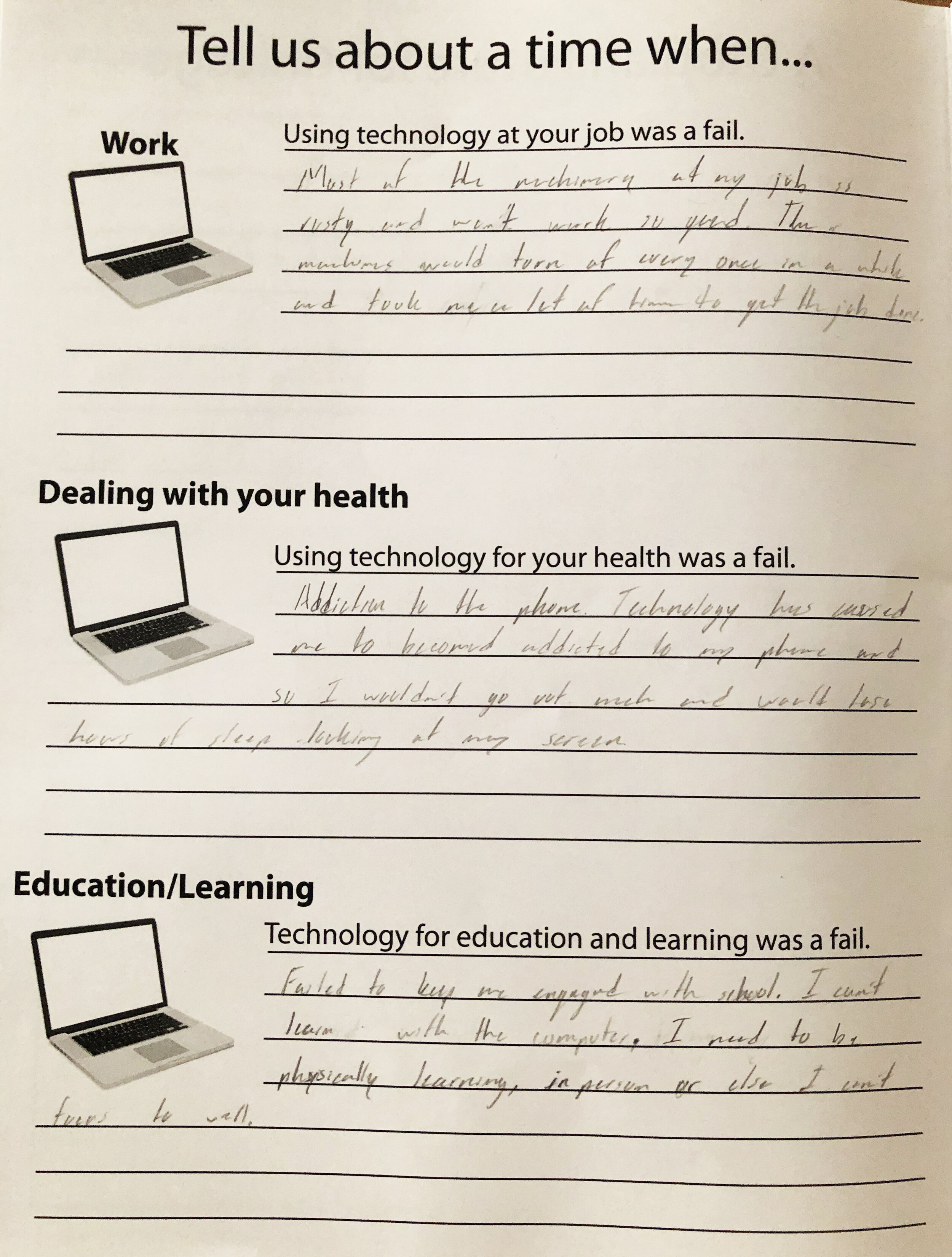

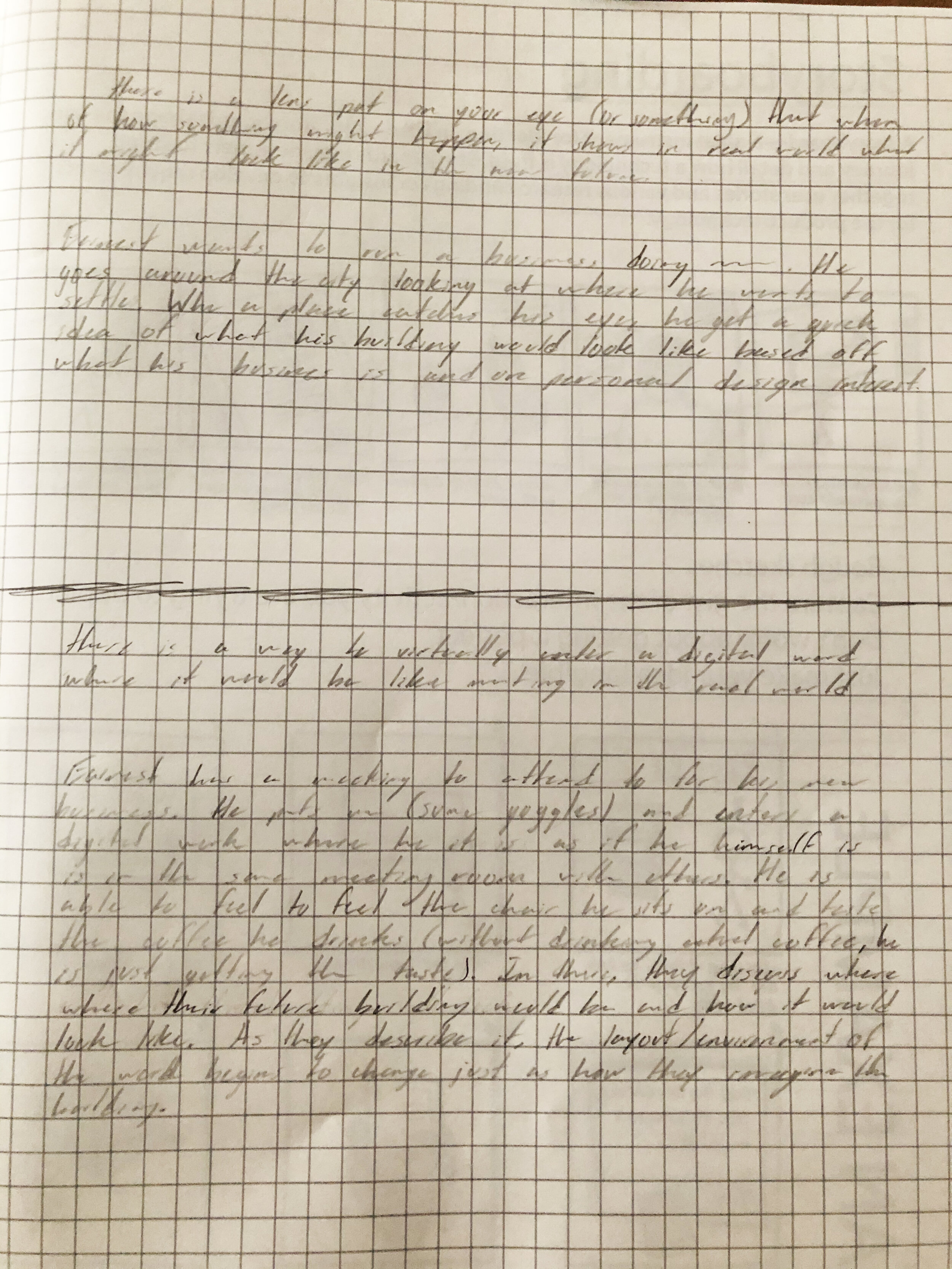
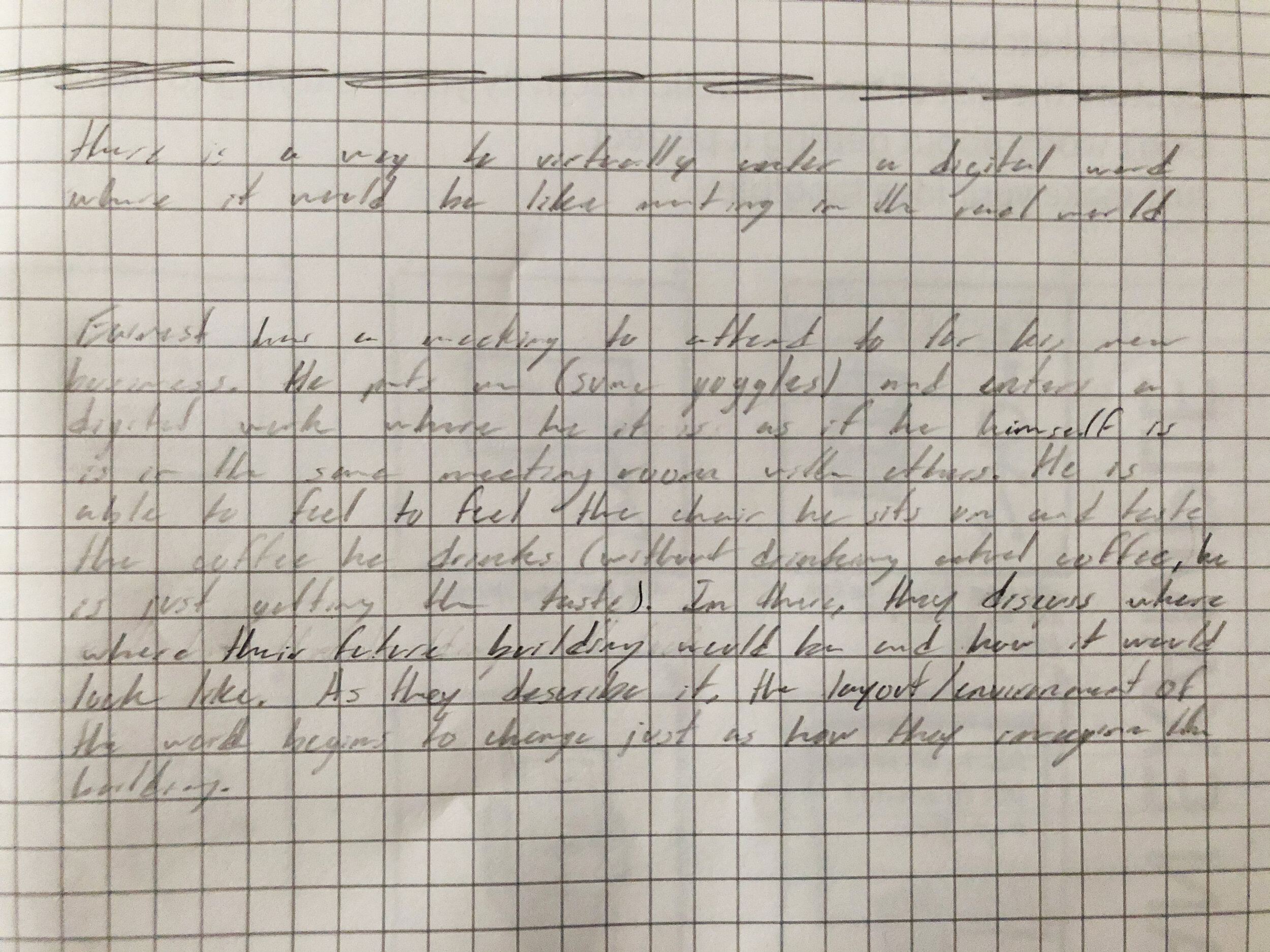
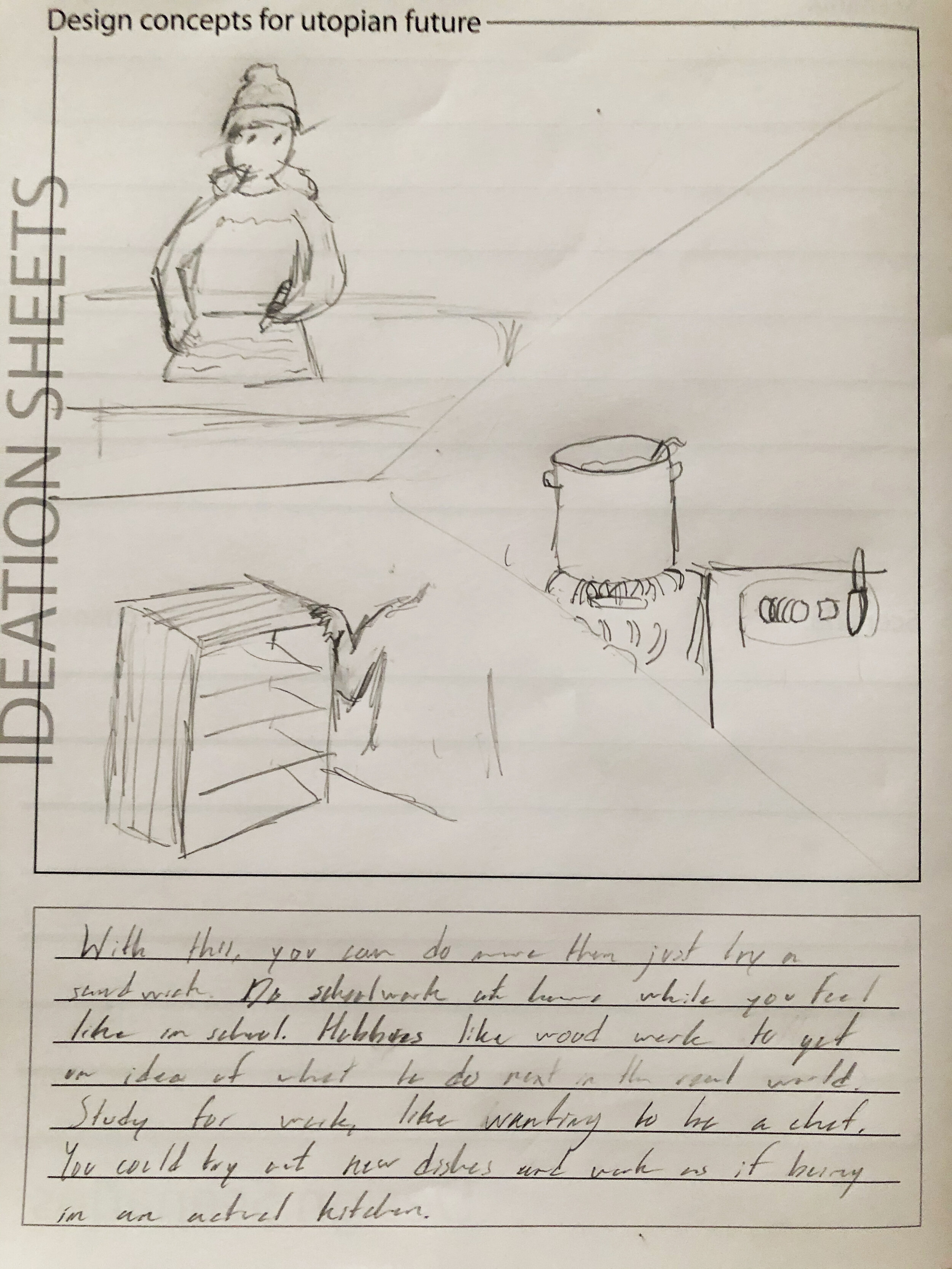
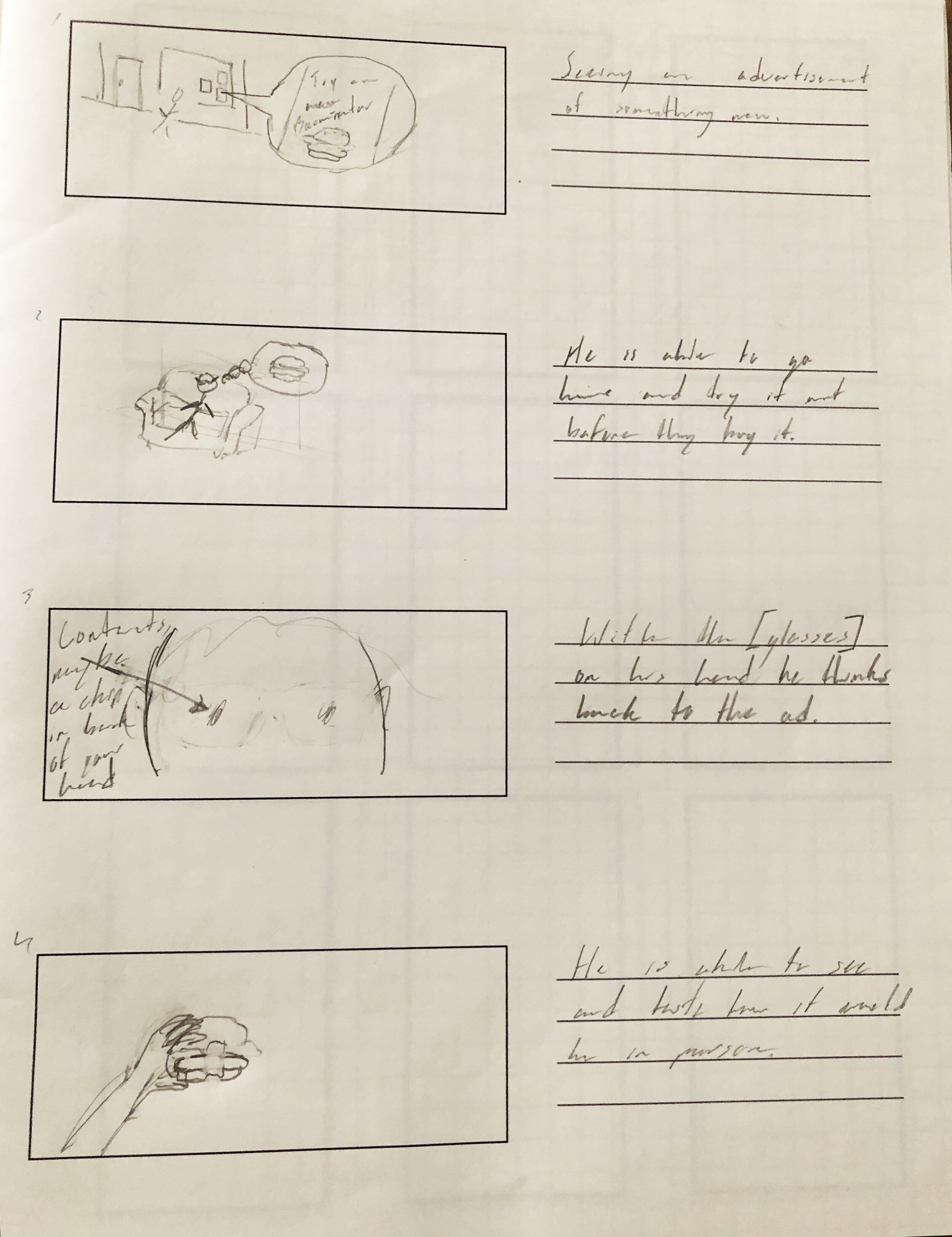
FINAL PROJECTS
DAP 1: The Flag (Designing Flags as Symbols in Public Space)
The capstone project of the program tasked apprentices to work in teams to design a 5x3 ft. flag for production. Each team decided upon the topic of their flag amongst themselves by weighing common interests. Over two weeks, teens worked together in choosing the topic, symbols, color schemes and layout for their flag on Pixlr. Each team received feedback from their peers and made revisions before finalizing their design for production. Each flag is supported by the team’s design statement that identifies their creative motives, and the public context they imagine their flag being placed in. The objective of this project was to synthesize all of the exercises and discussions to design and produce an object for the public. Teens had to consider the history of flags and flag design, symbology, materiality, and public context to create an effective design.
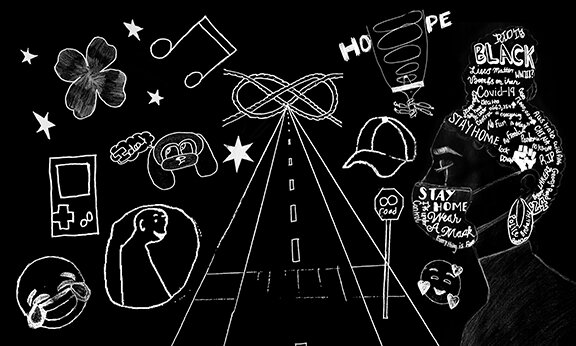





DAP Instructors
DAP I: Nathan Miller is an artist, educator and musician from the South Side of Chicago. Drawing from spiritually charged experiences, his work is a wide-ranging study of the nature of time, belief and his Christian faith. Miller melds together photography, sculpture, public installation and ministry in ways that constructively collapse rigid distinctions of content and form, and he self-admittedly frames his practice as, "a sonata composing itself". Having studied photography at the University of Illinois at Chicago (BFA, 2013), The University of The Arts London (2011), and the Rhode Island School of Design (MFA, 2017), Miller's practice is rooted in the tradition of documentary image making. Miller has exhibited at galleries and museums in Chicago, New York, London, and Rhode Island, including: Schneider Gallery Chicago (IL), Chicago Art Department (IL), Washington Park Arts Incubator (IL), ClampArt (NY) and the RISD Museum (RI). Miller is an AICAD Fellowship recipient (Pratt, 2018), and lecturer of photography at The School of the Art Institute of Chicago.
DAP II: Sherry Diaz (she/her/hers) is an artist, designer, woodworker, educator, and a super-proud mama. Sherry studied at The Krenov School of Fine Woodworking, based in Fort Bragg California. Previous projects include the small business Elephant Playthings, an online-based store focused on the design and crafting of simple wooden toys and furniture. She strongly believes that craftspersons need to take the initiative of teaching younger generations the craft itself— as well as an appreciation for work done with one’s hands and heart.


